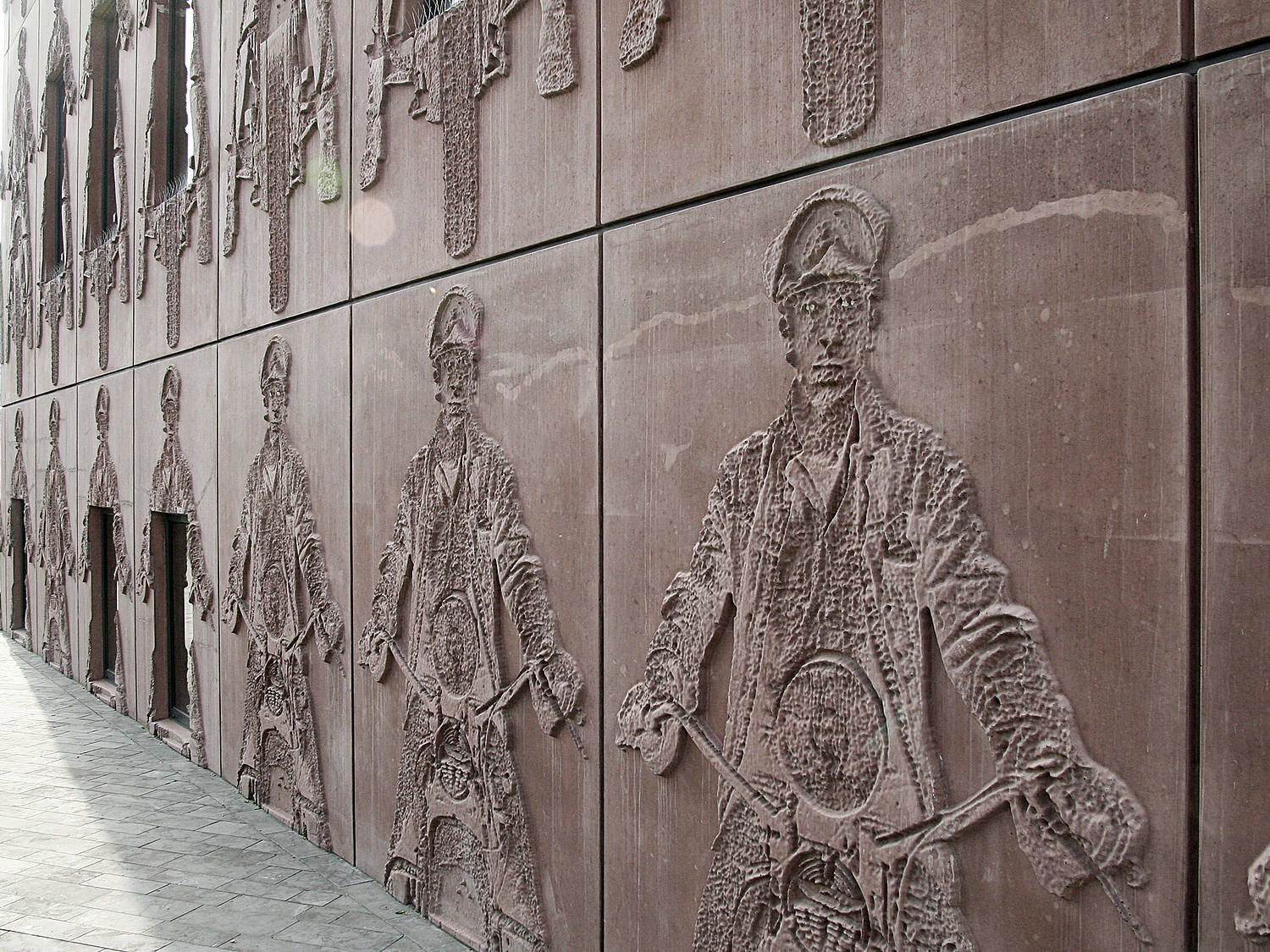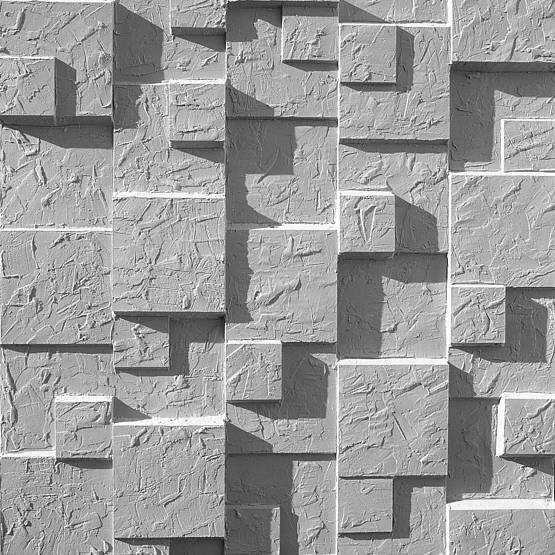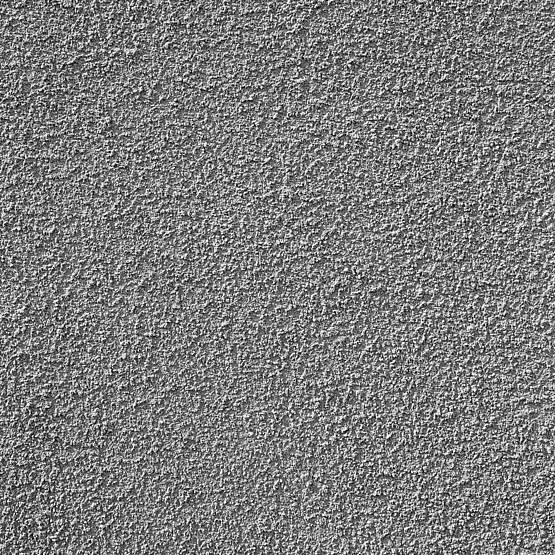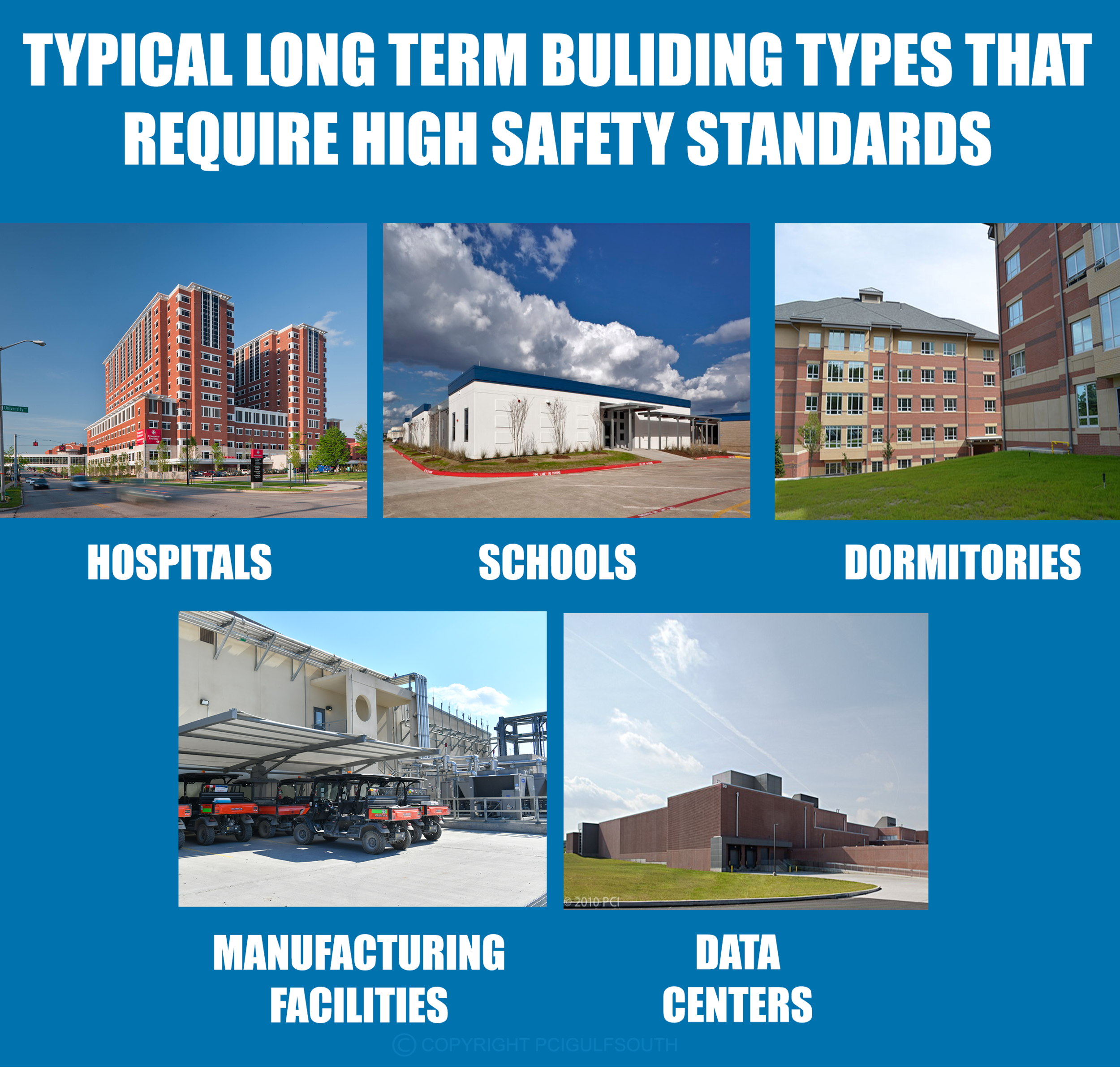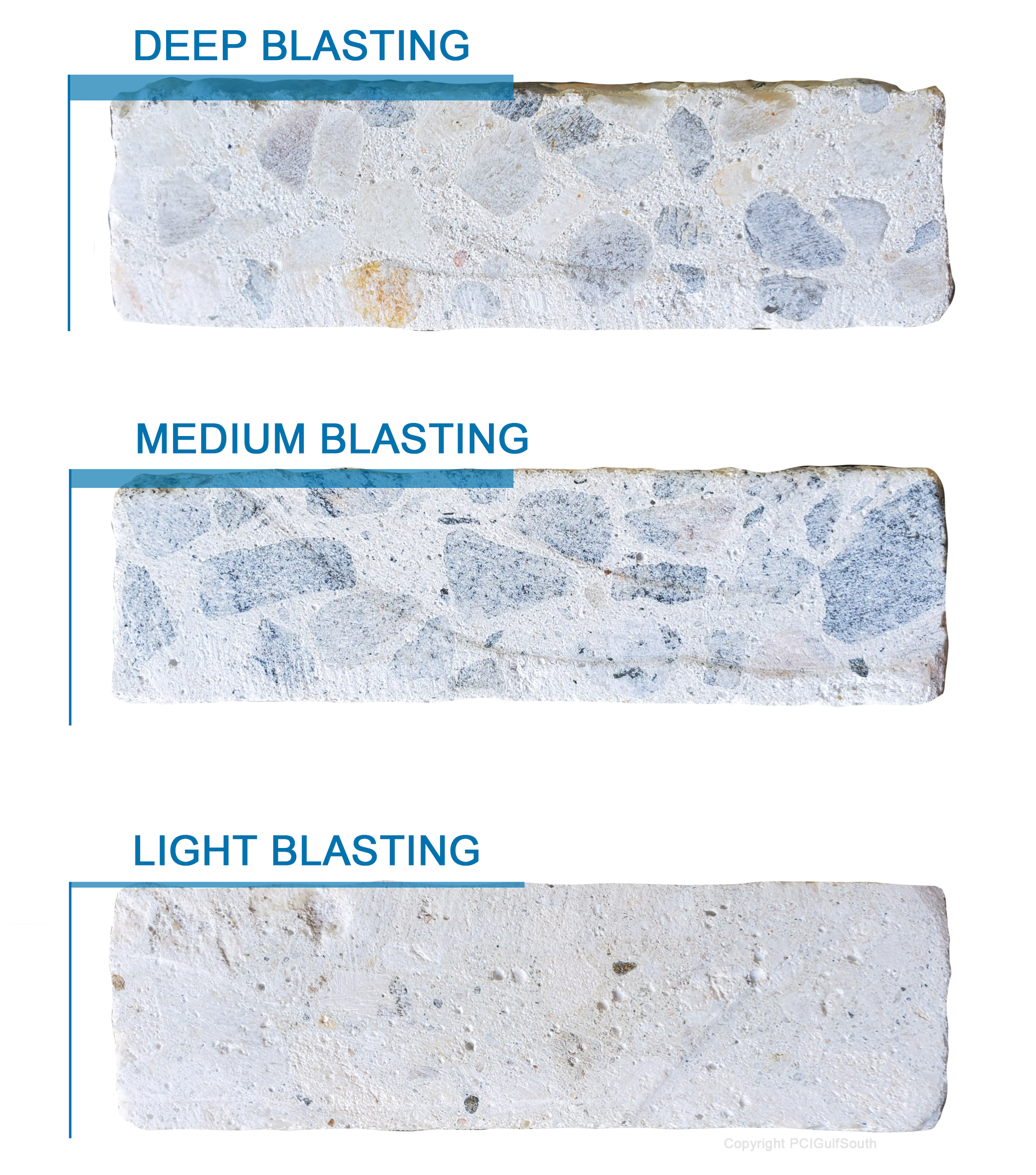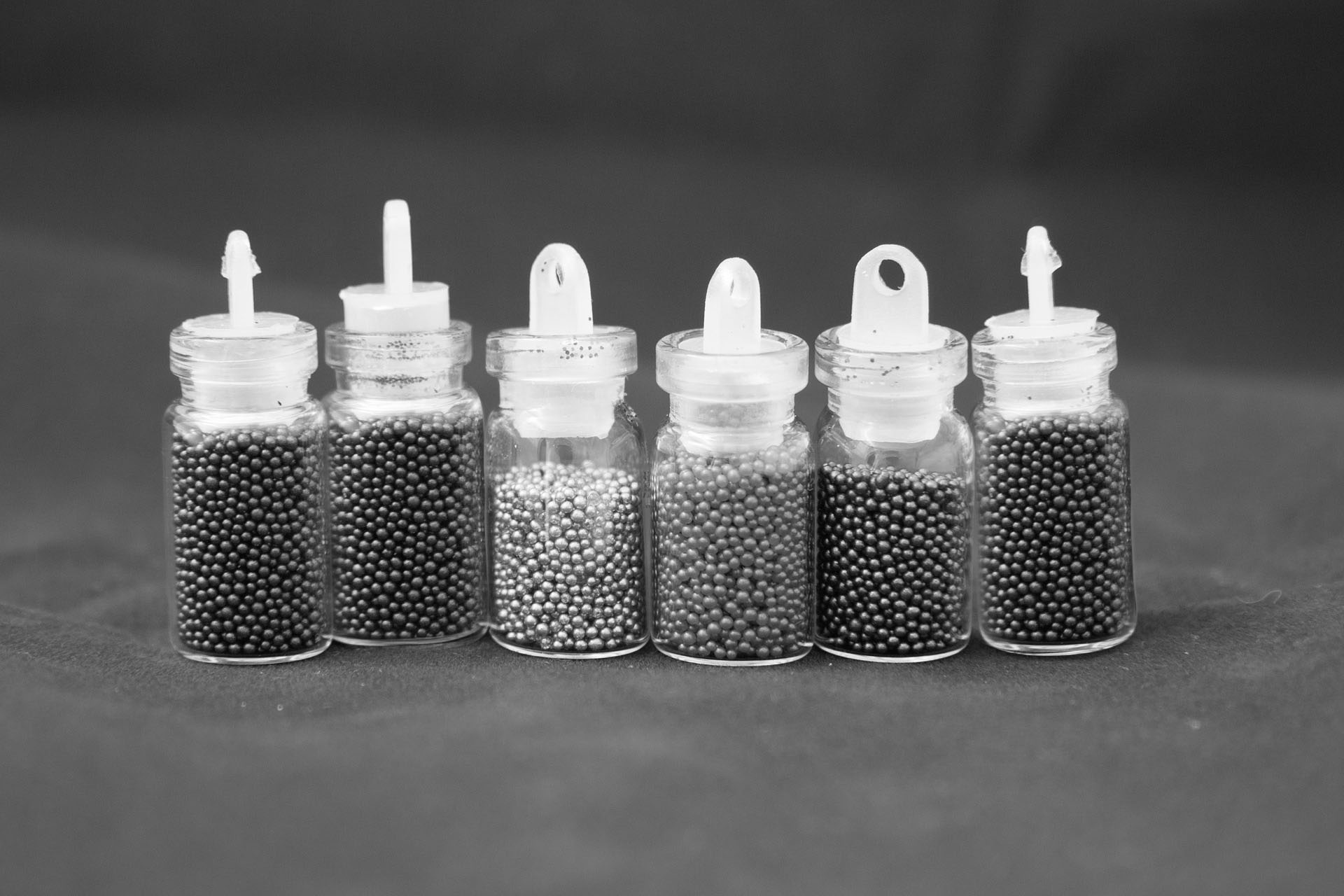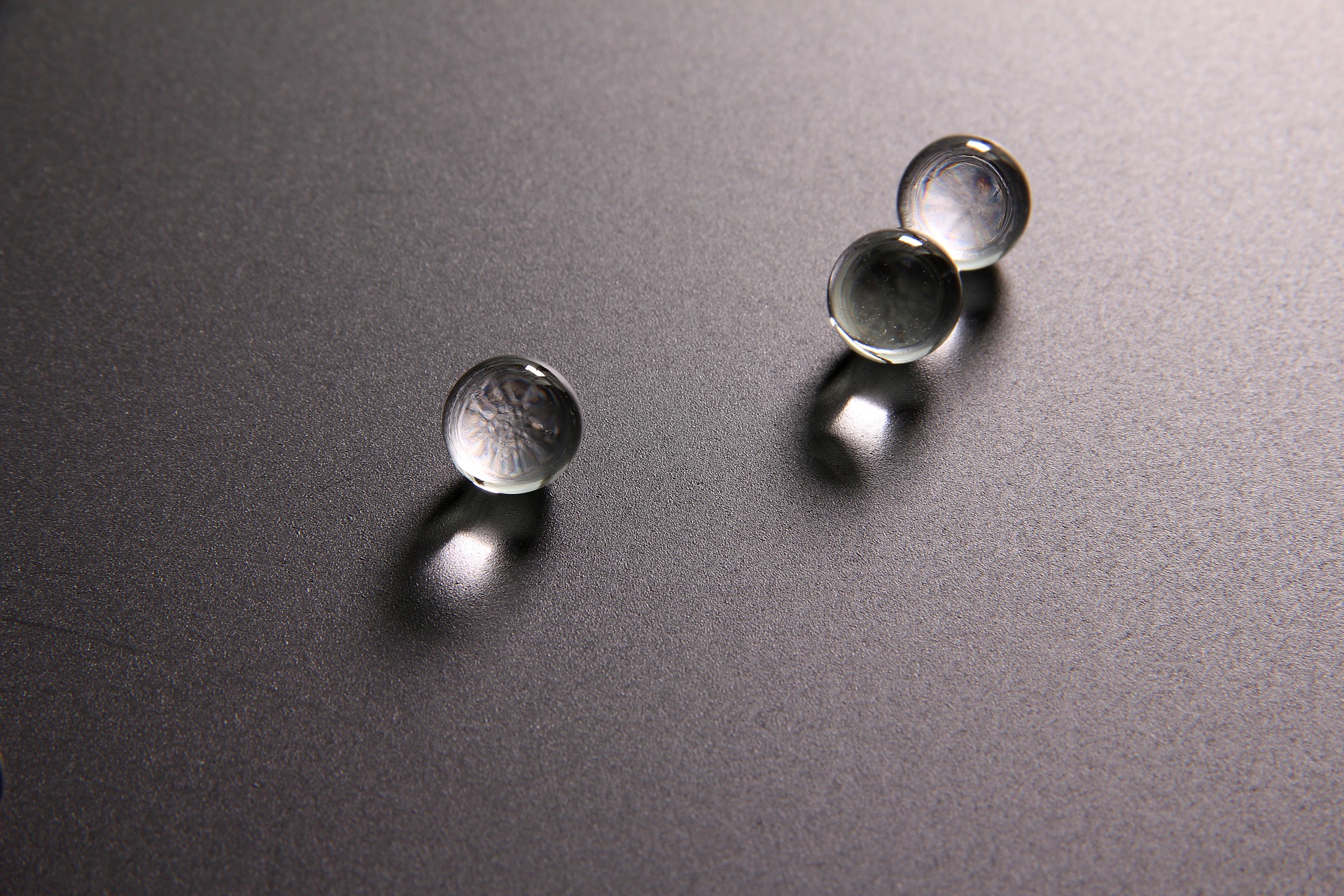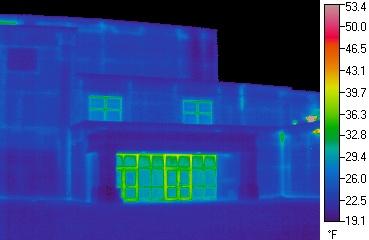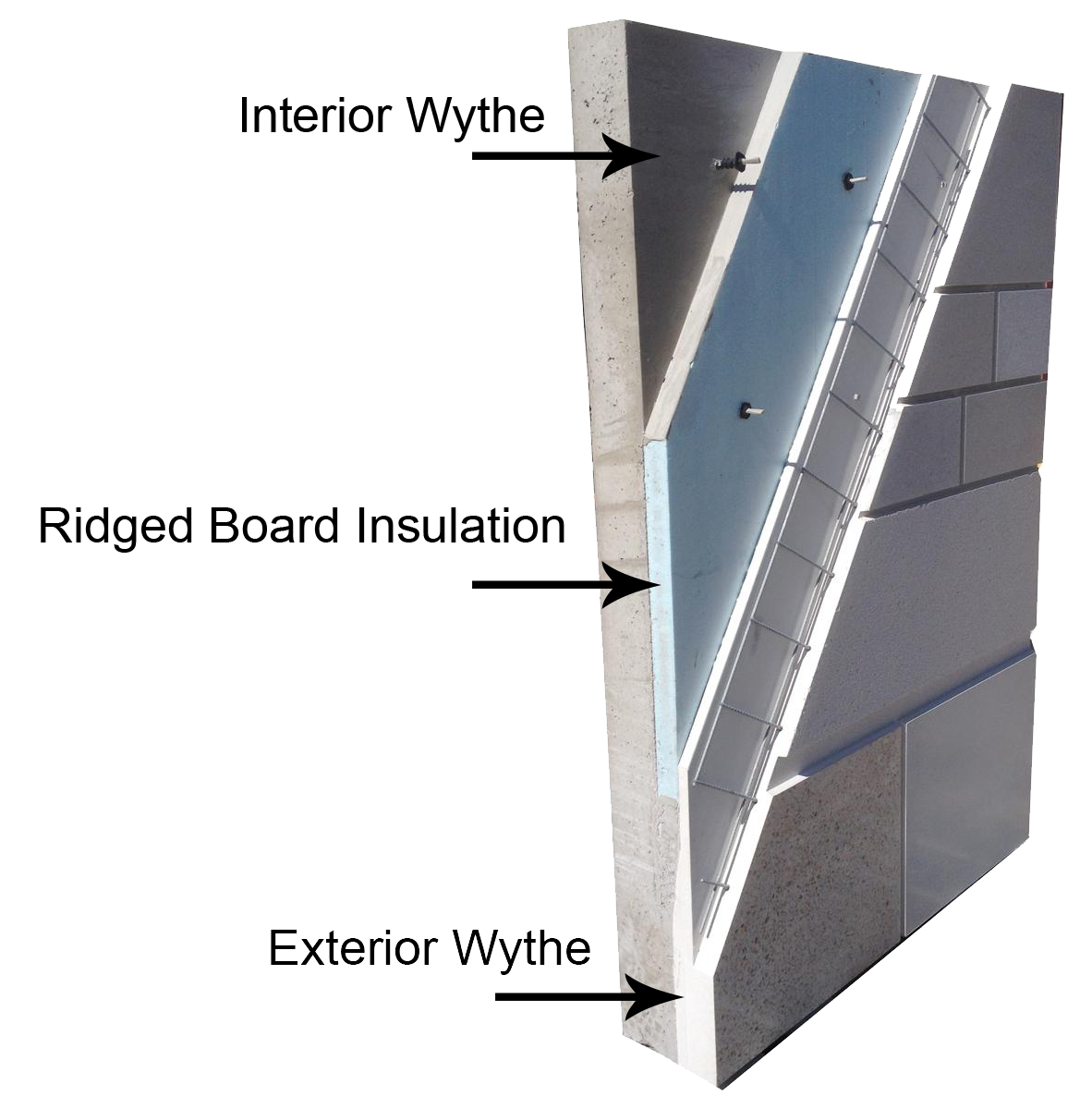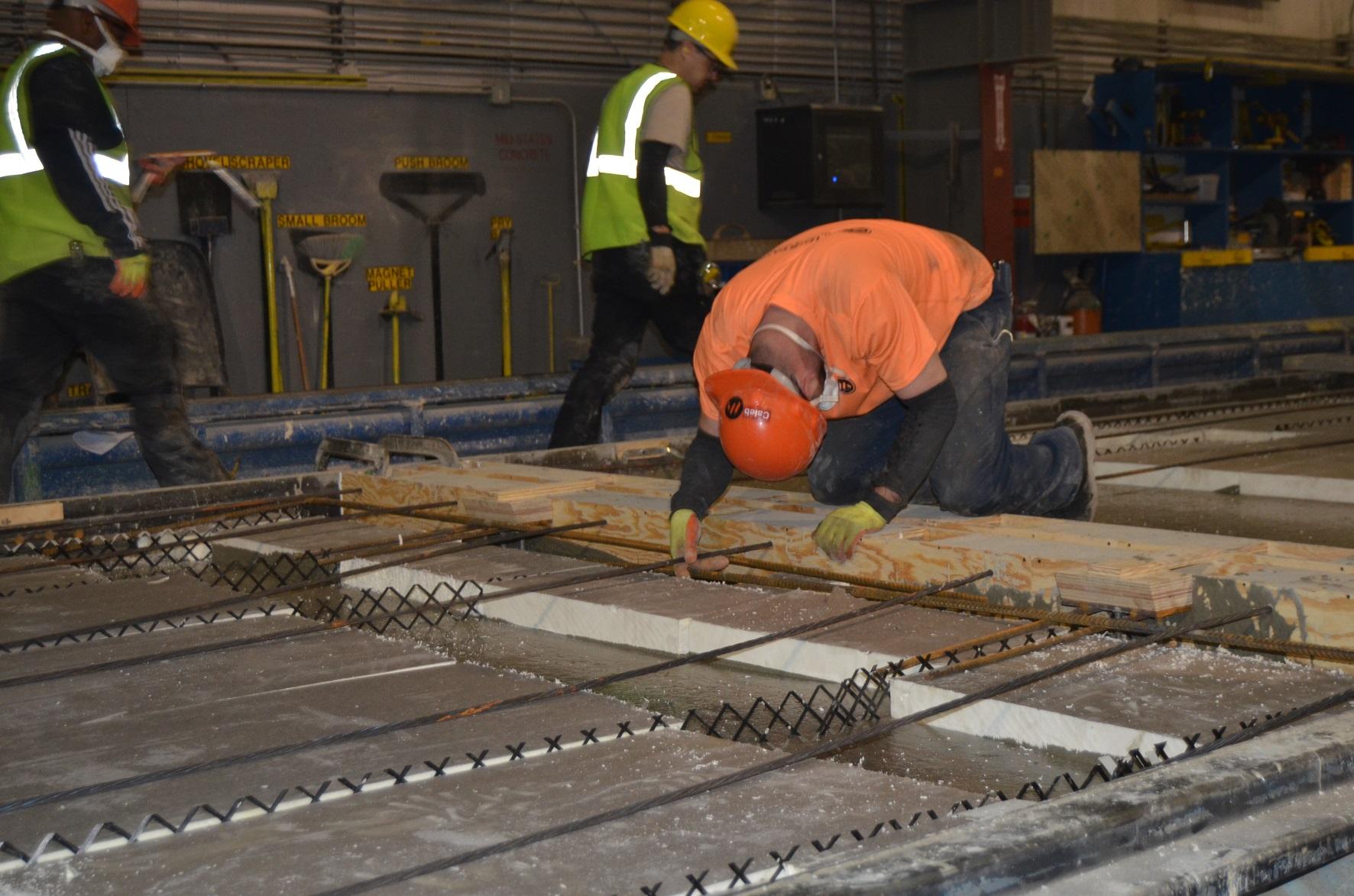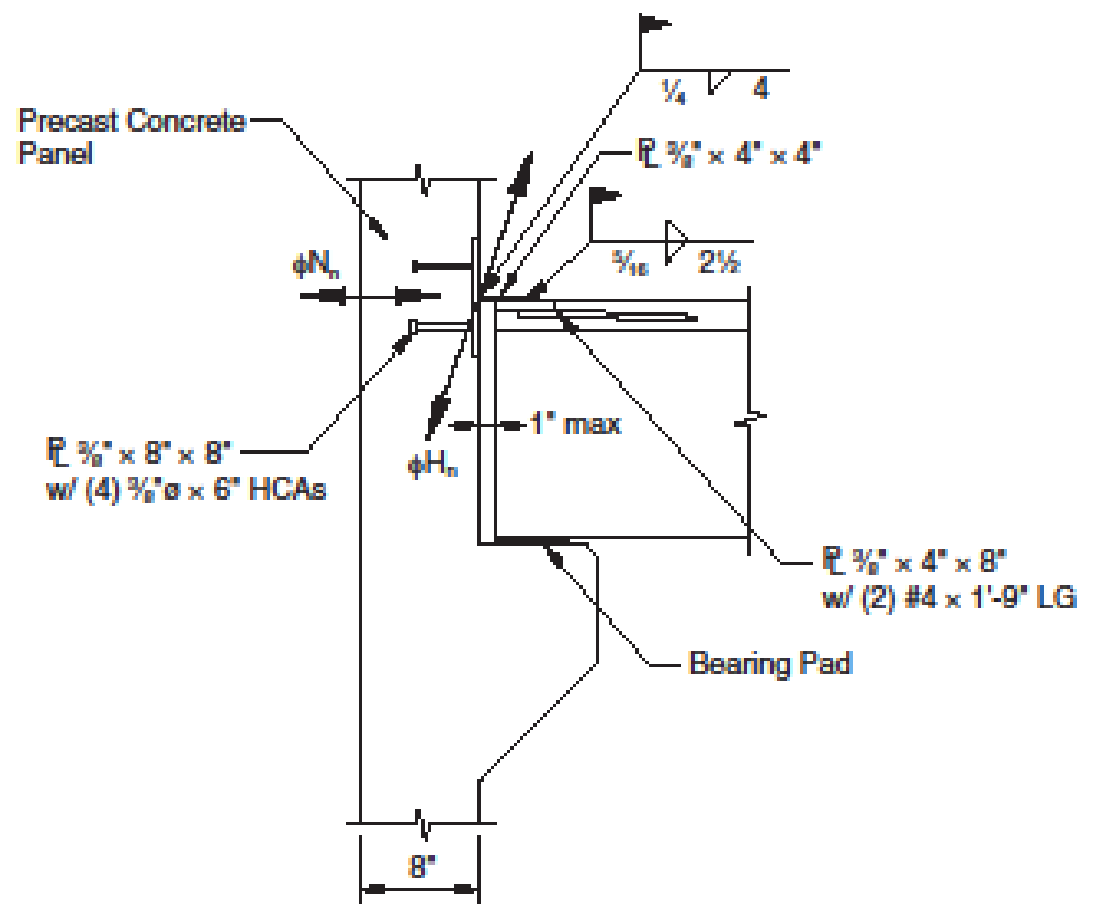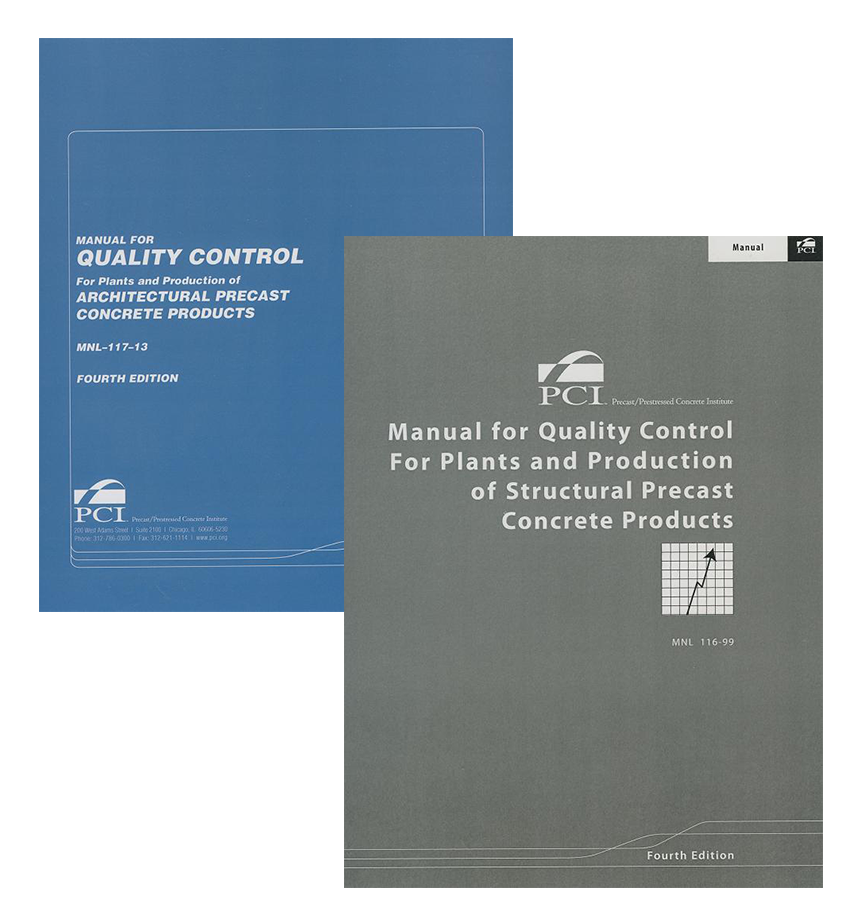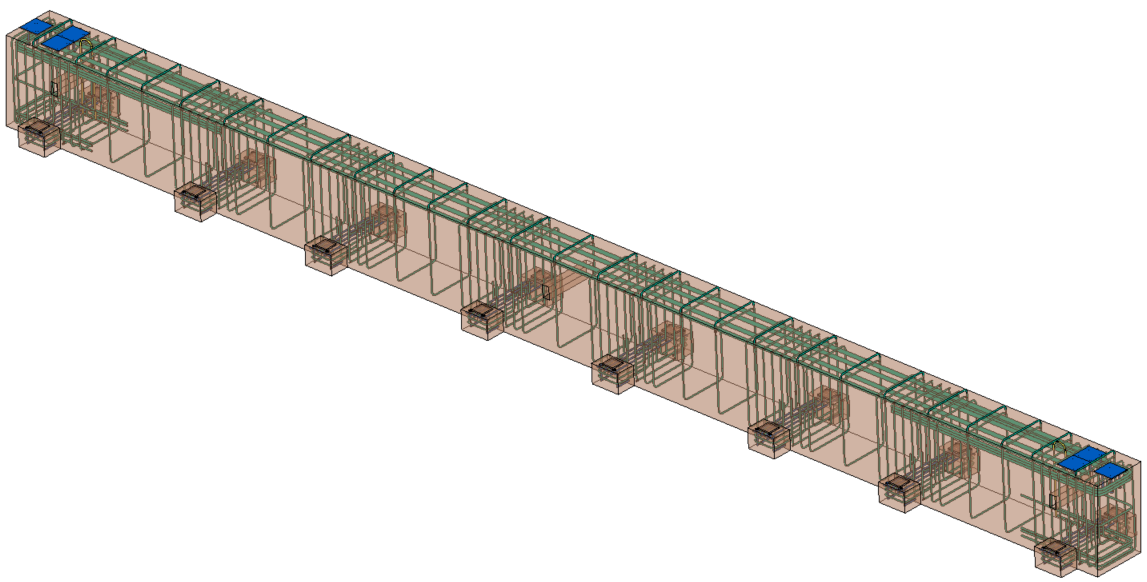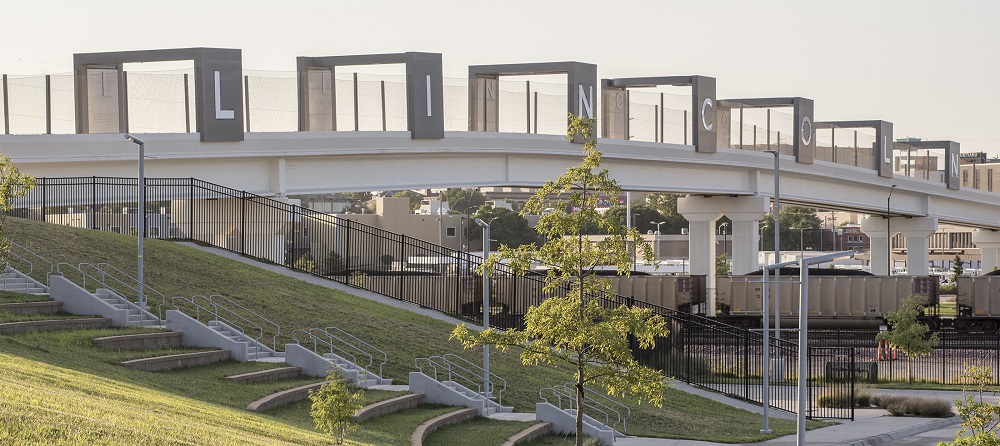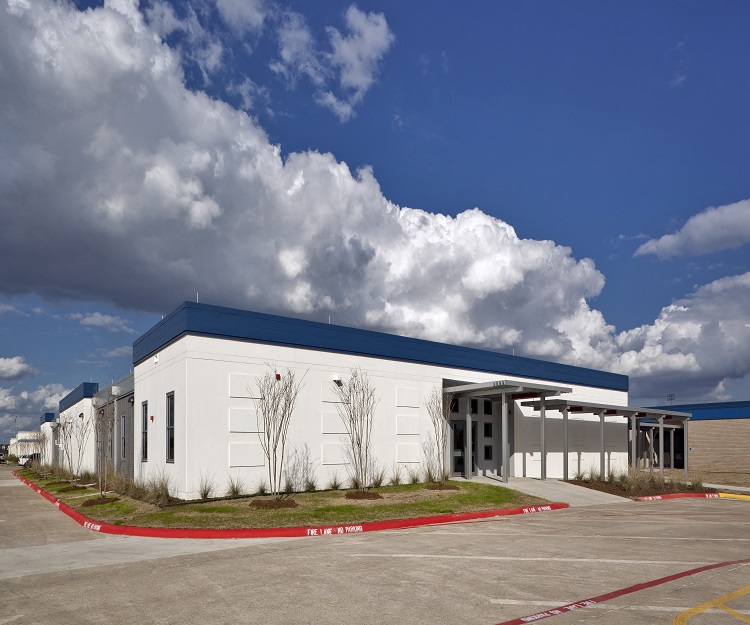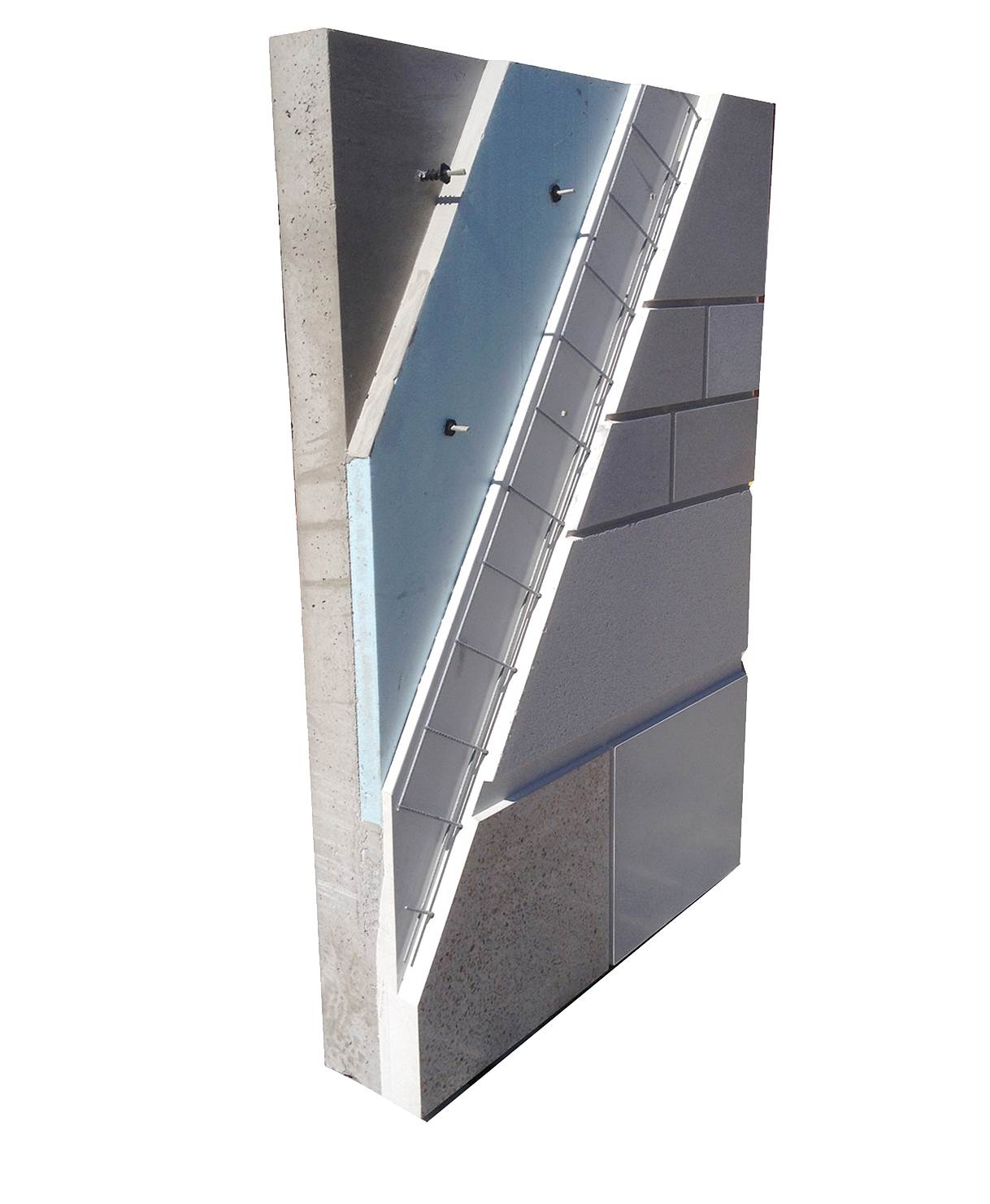The Value in a Precast School Structure
The resurgence of precast into the school market started in 2000 when labor shortages placed a crunch on the timelines for school projects. The advancements in precast building products gained a second look of designers because of the lengthy list of advantages precast brings to a project.
The investment in education in the US comes with a phenomenal price tag. A look at both the public and the private school sectors reveals where the bulk of money is spent to support the education of our youth.
Current Environment for Schools
A closer look at the public/private school sector reveals there are roughly 13,506 public school districts in the US with a whopping 130,930 buildings currently in use by school children in K-12. Additionally, there are another 34,576 private schools in the US that serve approximately 25% of the school age population and are mostly religiously affiliated. The median age of the buildings in use are 44 years old and have not undergone a major renovation in the last 12 years.
School budgets are stretched thin each year as taxpayers resist increases and expenses continue to climb. The largest expenditures fall into the categories of:
Maintenance
Infrastructure
Capital Work/Improvements
Staff Salaries/Benefits
Transportation
Utilities
How Can Precast Concrete Play a Role in Easing Budget Woes for School Districts?
The resurgence of precast into the school market started in 2000 when labor shortages placed a crunch on the timelines for school projects. The advancements in precast building products gained a second look of designers because of the lengthy list of advantages precast brings to a project. The desire of school administrators to steer away from traditional 30 student square classrooms located on either side of a main hallway opened the door for the precast community to demonstrate the tremendous versatility and adaptability of precast building systems. With the ability to meet codes in any part of the country, precast components are also the answer to concerns about thermal efficiency, safety from natural disasters, speedy project completion schedules and long-term life cycle cost management issues. Although it’s hard to “teach an old dog a new trick” and schools tend to repeat the same building styles they currently have, specifiers are consistently seeking ways to create learning environments to meet the changing demands of the student population in a sustainable and efficient manner all with a tight grip on the limited funds they have to work with.
Why Is Precast The Right Choice for Schools?
Accelerated Schedules
Offsite manufacturing of precast building systems allows for a high quality product that arrives to the site ready to be installed. The project is not hindered by weather challenges and requires only minimal laborers onsite.
Storm Shelters/Weather Events
Providing a safe learning environment that can pull double duty as a community storm shelter is the beauty of a multi-use precast design. Many districts apply for FEMA funding grants to assist with the cost of new construction. The new construction must adhere to the types of requirements that precast concrete naturally addresses (i.e. IBC wind rating to 250 mph).
LEED/Sustainability
Educational facilities designed to maximize thermal efficiency and lessen environmental impacts have gained momentum with sustainable considerations woven into the design. The PCI Gulf South blog on LEED and precast discusses how precast concrete excels at meeting LEED requirements.
Architectural Precast can match Historic Schools
Oftentimes, districts choose to add an addition to an existing building in lieu of a completely new structure. Through the use of such things as specialized formliners, color and texture options, thin brick inlays, etc precast wall panels can be manufactured to replicate the look of an existing structure for a seamless appearance.
Renovations
The following Ascent issue highlights some of the many ways precast concrete offers school districts the qualities they desire for new projects. From matching historical qualities to budget considerations to increased speed of construction...each project brings a unique set of challenges that precast concrete addresses with efficiency and durability.
Fire Resistance
Precast concrete structures offer premier fire resistance and create an environment that is safer for occupants and safer for first responders in the event a fire does break out. Precast keeps fire compartmentalized and will not burn unlike competing timber building materials.
Security
Schools constructed with precast concrete allow for design options that maximize security by providing long site lines and secure access points. Each design caters to the needs of the school with an impenetrable building product.
Athletic Facilities
Stadiums, training facilities and arenas are areas of extreme use and abuse. Precast concrete systems handle the human element as well as the natural elements and perform exceptionally well in all climates and geographic locations
Urban Environments
School construction in tight urban areas pose challenges to the “traditional” style of building. However, precast components arrive at the site ready to erect with minimal laborers and minimal staging area, thus offering less disruption to existing schools as they remain functional throughout the process.
Read more about precast in urban spaces in our blog below.
Life Cost Analysis
When considering the long-term costs associated with operating a school, the savings realized through the use of a precast building system can be found through lower maintenance costs and reduced heating/cooling costs among other things.
Our blog, Think Long Term Choose Precast Concrete discusses this idea in more detail.
Technical Resources
Ascent offers an invaluable resource for designing educational facilities with precast. Technical information, along with project examples are included here. Click on an article to read more information.
Case Study
The Charleston Progressive Academy reaped the benefits of using precast on their project. With the expertise of Tindall, leading manufacturers of precast concrete building components, the Charleston Progressive Academy had the project completed in under one year, saved tens of thousands of dollars in construction costs, and had their design completed in a tight urban area.
School projects deserve to be designed to make the very best use of the dollars invested in them. Precast concrete systems offer the full package of durability, safety, economy, versatility, adaptability and so much more. This is HOW PRECAST BUILDS.
Precast and Sustainability
So what does LEED have to do with precast? Precast concrete building components possess some of the most inherently environmentally friendly and resource friendly attributes of any building material available.
Building trends evolve over time and one of the more noteworthy changes the industry has seen in recent decades is the creation of the LEED certification rating system. This “badge of honor” is earned through the design of structures that address environmental issues in a mindful manner. The LEED Rating system was developed by the non-profit, non-governmental organization known as the United States Green Building Council (USGBC). The organization has developed this voluntary rating system to aid designers. Oftentimes, public projects will mandate that a structure must attain a specific level of LEED certification but private projects have the option to pursue a rating if desired.
Based on a point system, the more points earned the higher the level achieved and the greater the reward. The points are earned resource-efficient buildings and healthy spaces for occupants.
So what does any of that have to do with precast? Precast concrete building components possess some of the most inherently environmentally friendly and resource friendly attributes of any building material available. The sustainability factor alone of projects constructed with precast well outperforms competing materials.
SUSTAINABILITY
Thermal efficiency: Edge-to-edge, top-to-bottom rigid insulation can be used within a relatively thin wall, providing a high effective R value. The thermal mass of the concrete provides an added benefit by slowing heat transmission through the wall, flattening out temperature swings. Visit the link for further details on precast insulated wall panels
Reduced Life Cycle/Maintenance Costs: Over the life of the structure, precast concrete costs less to maintain and lasts longer than other traditional building materials resulting in less need for repair/replacement. Building a structure that lasts decades with little additional maintenance versus building a structure that requires on-going upkeep makes sense and saves money. Couple this with the integration of recycled materials in the manufacturing process and the savings is even greater.
Energy Savings: Aside from the thermal mass of concrete itself, walls are often insulated with materials such as polystyrene to maximize the R-value. They act as a thick insulated barrier against summer sun and winter cold. This characteristic allows for a smaller investment in HVAC equipment on the front end and eases the load on HVAC systems over the long haul, resulting in lower operating costs.
Durability in Challenging Environments
Whether the issue is hurricanes, flooding or tornadoes, the “tough as nails” properties of precast concrete addresses the issue with an inherent durability unmatched by competing building materials. Dig further into the advantages of precast concrete as a primary building material at both resources at the links below. Sustainability, life-cycle considerations, and environmental product declarations make the case for why pracast is a slam dunk in areas prone to repeated extreme weather challenges.
Current Innovations
Carbon Neutral Concrete
In an attempt to reduce the amount of carbon dioxide that is produced during the production of cement, a key ingredient in concrete, substantial resources have been directed toward solutions to create a more carbon neutral mix.
Concrete Recycling
As further examples of how concrete can be environmentally friendly in the form of a recycled material, visit the following link to learn the five step process for concrete recycling and ways reclaimed concrete is used for such things as underpass abutments, erosion control structures and pipe bedding.
BioInnovation Center
The BioInnovation Center was the first laboratory building in Louisiana to achieve LEED Gold certification as a result of various sustainable features. The sustainable design features include:
An outdoor water feature that also serves as a basin to capture rainwater and AC condensation which provides water to all the building’s landscaping
Careful design which allows for more windows while reducing the solar gain of the facade
Seventy five percent of the building facade provides daylight to illuminate the facility resulting in less energy usage during the day
Building facade includes glaze that provides solar controls to assist with building temperature
Precast concrete building products are sustainable, versatile and durable. Regardless of whether the goal is LEED certification, or simply a building that is going to perform well for decades with minimal maintenance and excellent life cycle costs, precast concrete is a top performer that continues to outshine its competitors in nearly every environmental category over the long haul. Do it right the first time...this is HOW PRECAST BUILDS.
Precast NEXT Beams
Adding another “weapon to the arsenal” against mounting infrastructure repair/replacement projects across the country, the NEXT Beam was developed by the Northeast State DOT’s in conjunction with consultants and precast concrete producers to serve as a solution to the bridge community’s need for an improved, high functioning beam.
Adding another “weapon to the arsenal” against mounting infrastructure repair/replacement projects across the country, the NEXT Beam was developed by the Northeast State DOT’s in conjunction with consultants and precast concrete producers to serve as a solution to the bridge community’s need for an improved, high functioning beam. These types of beams tackle common bridge construction problems in an efficient, no nonsense manner.
What are NEXT Beams?
The NEXT Beam is a regional standard that was developed by the Northeast State Departments of Transportation and local fabricators. Similar to other standard bridge sections, they are available from multiple fabricators and are not proprietary. In the PCI Gulf South region, Forterra in Pelham, AL is an experienced producer of the NEXT Beam. The development of this new type of beam addressed some recurring issues such as:
The need for shorter spans
Costly expense of adjacent box beams
Accommodation of utilities
Inspection difficulties due to limited side access
Aids in ABC -Accelerated Bridge Construction
All these issues and more were improved with the fabricator-friendly, cost-friendly NEXT Beam that can be produced in variable widths with spans ranging from 40-90 feet.
Technical Resources
Available under the Design Resources tab are PCI Bridge Design Manual specs for NEXT D and NEXT F.
The idea of the NEXT Beam came to life after an observation of an unrelated precast product in a precast concrete manufacturing plant. Read about the chain of events that led to the development of the NEXT Beam.
The first of its kind, The New Bridge (Route 103) in York, Maine was the very first NEXT Beam bridge project completed.
How are they made?
In this time lapse video, Dailey Precast in Vermont shows a highly skilled workforce in a PCI certified precast concrete plant manufacturing a NEXT Beam. The quality controlled process and offsite environment allows for production to be free from common issues, such as weather related interruptions, while maximizing worker safety and efficiency. The completed beam is immediately ready to be trucked to the installation site “just in time” so there is no need for storage at the job site.
What are the benefits of NEXT Beams?
Minimize Labor: Because precast products, such as NEXT Beams, are produced in a plant using reusable forms, the need for manpower is reduced.
Accelerated Schedule: The manufacturing process moves forward without interruption when it occurs at an offsite precast plant. The bridge beams are installed quickly resulting in less disruption to traffic flow in the community.
Cost Saving: Reducing manpower + accelerated work schedule + greatly reduced life cycle costs = significant savings.
Reduced Future Maintenance: Unlike steel bridges or wooden bridges that require ongoing maintenance such as painting or replacement, concrete bridge components are highly durable and function well in extreme weather conditions. For example, the Walnut Lane Bridge north of Philadelphia is the first precast prestressed bridge ever built. It is currently 70+ years old and going strong. Excellent return on investment!
Accelerated Bridge Construction dovetails nicely with the use of precast bridge components such as the NEXT Beam. The ability to minimize time in a work zone by using strategic planning and “ready to install” products speeds the entire process along translating in less disruption for commuters and less opportunity for job site accidents.
Case Studies in PCI Gulf South Region
Phase 1 of the Cribbs Mill Creek Drainage project provided the opportunity for the first NEXT Beam usage in the state of Alabama.
Delivered and erected in just four days, Forterra in Pelham, AL provided sixteen NEXT Beams to span a 280 foot bridge in Decatur, GA.
So it’s said…”necessity is the mother of invention”. The need for a more efficient bridge beam design found its way into the transportation community through the development of the NEXT Beam and it is systematically changing the way bridges are repaired/replaced with an emphasis on cost effectiveness, durability and design flexibility.
Precast Concrete: Making the Most of Tight Spaces
With growing popularity, the construction industry is looking towards the use of precast concrete building components to solve or lessen the issues of working within a small area. Precast concrete as a primary building material for a project brings advantages no other material can match.
There are a lot of reasons why it’s sometimes necessary to squeeze a structure into a tight space. Given the choice, designers and contractors would not choose to be faced with constructing a project in close confines. However, there are times when a choice of locations is not an option and the challenge must be tackled. Some reasons for building in a cramped location might include:
Rebuild/replace a demolished structure in original location
Expansion of an existing structure
Prime location for business/industry/tourism etc
With growing popularity, the construction industry is looking towards the use of precast concrete building components to solve or lessen the issues of working within a small area. Precast concrete as a primary building material for a project brings advantages no other material can match.
Along with the favorable manner in which precast concrete meets the needs of a small project area are some well known benefits of offsite manufacturing such as:
Produced in a quality controlled/quality inspected environment
Not at the mercy of weather related delays/cancellations
Consistent, high quality is achieved with each piece
Trucked to the jobsite when needed
In the PCI Gulf South region and other regions across the US, PCI certified producers know how to work in tight urban spaces while still providing a quality product to our clients. Below are a few examples of completed projects there were erected in confined spaces.
WWII Museum in Downtown New Orleans
University of Mississippi North Parking Structure
Campbell Sports Complex at Columbia University
The difficulty of building in a confined space cannot be minimized regardless of what building material is selected, but precast concrete products are particularly versatile and flexible. With careful planning/scheduling/sequencing/crane coordination, incredible structures have been created in some extremely challenging spaces using PCI certified precast concrete building materials.
Precast Connections
In the erection of a precast structure, connections are the “glue” that keeps it all together. As such, there is a vast array of connections available to meet the individual requirements of the project.
Precast Connections: The "glue" that holds it all together
In the erection of a precast structure, connections are the “glue” that keeps it all together. As such, there is a vast array of connections available to meet the individual requirements of the project. The transfer of loads, restraint of movement and creation of stability is the role of connections.
Connection Design Considerations
Strength
A connection must have the strength to avoid failure during its lifetime.
Ductility
The ability of a connection to undergo relatively large deformations without failure.
Volume
Change Accommodation Restraint of movement due to creep, shrinkage, and temperature change can cause large stresses in precast concrete components and their connections. It is better to design the connection to allow some movement, which will relieve the build-up of these stresses.
Durability
When the connection is exposed to weather or used in a corrosive environment, steel elements should be adequately covered by concrete, painted, epoxy-coated, or galvanized. Stainless steel may also be used, however, the added cost should be considered carefully.
Constructability
The following reflects only some of the items that should be considered when designing connections:
Standardize connection types
Avoid reinforcement and hardware congestion
Avoid penetration of forms
Reduce post-stripping work
Consider clearances and tolerances of connection materials
Avoid non-standard product and erection tolerances
Plan for the shortest-possible crane hook-up time
Provide for field adjustments
Provide accessibility
Determine if special inspection is required per the applicable code for the material and the welding process
Provide as direct a load path as possible for the transfer of the load
Fire Resistance
Connections, which could jeopardize the structure's stability if weakened by high temperatures from a fire, should be protected to the same degree as the components that they connect.
Aesthetics
For connections that are exposed to view in the final structure, the designer should incorporate a visually pleasing final product.
Seismic Requirements
Structures and/or components that must be designed for seismic loads may require special consideration. Consultation with a structural engineer with experience in seismic design is recommended.
Tolerances
The designer must realize that normal allowable fabrication, erection, and interfacing tolerances preclude the possibility of a perfect fit in the field
Connection Materials
Headed Concrete Anchors (studs) are round bars with an integral head. These are typically welded to plates to provide anchorage to the plate.
Steel Shapes including wide flanges, structural tubes, channels, plates, and angles.
Reinforcing Bars are typically welded to steel sections to provide anchorage to the steel.
Reinforcing Bar Couplers are typically proprietary devices for connecting reinforcing bars at a joint. Precast producers of these services can provide technical information.
Deformed Bar Anchors are similar in configuration to deformed reinforcing bars and are welded to steel shapes to provide anchorage similar to headed concrete anchors.
Bolts and Threaded Connectors are used in many precast concrete connections. Use of ASTM A36 or A307 bolts is typical. Use of high-strength ASTM A325 and A490 is usually not required.
Specialty Inserts are available from many precast producers of these devices. They include standard threaded inserts, coil threaded inserts, and slotted inserts that provide for tolerances and field adjustment.
Bearing Pads are used predominantly for structural applications to support beams, double tees, and similar components. Use of random fiber oriented bearing pads (ROF) is recommended.
Shims can be hard plastic or steel and are often used to provide adjustment to align a precast concrete component for elevation or horizontal alignment.
Looking to learn more about connections? Try the PCI resources below!
Types of Connections
Click on any of the connection type graphics below to get a better look!
Structural Connection Types
Cladding Connection Types
The structural connections are generally used in structures such as parking garages, office buildings and warehouses where panels sit on a footing whereas, the cladding type of connections are used to attach the outside cladding to the underlying structural frame that could be made of various materials ( ie. steel)
Connection Examples
Pic #1 is a Double Tee to Corbel
Pic #2 is a Spandrel Beam to Column
Pic #3 is a Panel to Panel Connection
The role connections play in the erection of a precast concrete structure are key to its strength and durability. Producers and engineers work diligently to employ connections that best fit with the project needs to meet and/or exceed all applicable codes.
For further information please refer to www.pci.org.
Precast Curing Systems
Operating a profitable precast concrete plant hinges on the ability to move product through the facility in a timely manner.
Photo via Civil Engineers Forum
Operating a profitable precast concrete plant hinges on the ability to move product through the facility in a timely manner. A key part of the precast manufacturing process that has a direct relationship to profit is being able to “turn the beds” as often as possible. The phrase “turn the beds” refers to removing completed product so that the next batch of product can be started.The speed at which the producer can engage in this repetitive cycle is what allows them to be competitive in the market. In order to do this, the precaster must attain 75% of the ultimate 28 day designed compressive strength of the concrete within 12 to 15 hours from final placement of the precast product.This 75 % is the level a precast piece needs to attain in order to be stripped and handled.
Air Curing
The most basic and least expensive technique is air curing. This involves simply allowing the concrete to dry naturally without any additional treatments/actions. Most producers will not use this type of curing due to the development of surface cracks and increased strength will not occur earlier in the cycle.
Adding Additional Cement
Adding additional cement to the mix to obtain a higher strength earlier in the curing process. Some plants also change the type of cement used from Type I/II to a Type III to achieve the advanced strength needed to “strip” or remove the product in the 12 to 15 hour time frame. The drawback of this method is an increase in price, as cement is one of the more expensive ingredients in the concrete mix.
Using Chemical Additives
The next curing option is the use of chemical additives, primarily, the use of accelerators. Accelerators increase the rate of hydration, which speeds up the set time, thus kickstarting the curing cycle earlier. The major drawback to accelerators is the increased cost. Accelerators require a seasoned technician with experience and knowledge of the process.
Curing Compounds
Curing compounds are also options when applied after finishing and used in conjunction with curing blankets to trap moisture and elevate the internal temperature of the product...allowing for a greater rate of hydration speeds up the curing cycle and increases the strength earlier. A typical drycast product uses this type of system.
Water Curing
The last two types of systems are active systems that require equipment and procedures. Water curing is a system by which burlap and soaker hoses are used for a period of time “to soak” the concrete, thus keeping it moist and trapping internal moisture at the optimal level for hydration. This system is also used in hot climates to keep the internal curing temperature from reaching levels that are not conducive to good curing practices. This system is used on DOT projects/products.
Water and Steam Curing
Finally, a commonly employed technique is a type of water/steam curing system that allows a precast piece to be stripped within the 12-15 hour time. In this case, low pressure steam is introduced into a controlled environment, such as an enclosed structure (or temporary structure like a tarp), at elevated temperatures for a predetermined time and then allowed to be cooled at a controlled rate. This provides a number of advantages to the curing cycle, such as maintaining relative humidity between 75%-90%. The greatest advantage to this system is the degree of control a producer has with the concrete curing cycle. Many producers customize the steam curing system for changes in the seasons or plant production cycles.
In conclusion, properly cured concrete will, in most cases, out perform design parameters and allow a properly designed structure to increase its life cycle and ultimately be a sustainable and resilient structure far into the future.
References: NPCA Tech Notes, Curing Wet-cast precast concrete
Precast in Universities and PCI Studios
University level education of future designers and engineers is crucial to the continued growth of the precast concrete market. As future industry professionals become masters of their trade, the investment that has been made in education at the university level is well worth it.
University level education of future designers and engineers is crucial to the continued growth of the precast concrete market. As future industry professionals become masters of their trade, the investment that has been made in education at the university level is well worth it.
Benefits of Teaching Precast in School
Young Engineers/Architects enter the workforce with knowledge on precast
Designing with precast concrete has not typically been a mainstream practice. Although precast concrete is one of the most versatile building products available, the precast industry has not marketed the product to its full potential. The idea of university level education is to plant the seeds of precast in a budding student’s bag of tricks for future reference.
Young Engineers/Architects can bring fresh design solutions to the construction industry
As students graduate from their programs and enter the workforce, they carry with them fresh ideas that perhaps their seasoned colleagues are unfamiliar with. By introducing and sharing perspective, young professionals help to offer design solutions that may not have been previously considered.
Young Engineers/Architects will be familiar with precast and can easily educate clients on the benefits
The idea of sharing fresh ideas and options with coworkers carries over to perspective owners/clients as well. Providing an array of design options to owners on the front end of a project is always a welcome sales tactic.
Young Engineers/Architects will be challenged to think how to use precast in unique ways
Because precast concrete offers a tremendous amount of creative freedom, it is an especially appealing and exciting building material to design with. The options and variations available, give each project unique possibilities. Engineers/architects comfortable with the uses and functions of precast concrete components strive for new options instead of repeating common designs.
PCI Foundation
The PCI Foundation’s sponsored competition known as “Project Precast” is held annually and involves college level students creating a precast concrete design on a compressed two day schedule. The 2019 winner of the contest was Team Tindall with a winning horse barn design.
Formed in 2007, the PCI Foundation has worked tirelessly to provide curriculum grants to schools of architecture, engineering and construction management. With the goal of building relationships between the academic community and the precast concrete industry, the Foundation raises and disseminates funds to advance the knowledge and use of precast concrete.
Along with instructional visits from precast concrete industry professionals, manufacturing plant tours, and reference/teaching materials, the PCI Foundation offers a four year grant program to universities in the form of a “studio” that allows professors to work through a proposed problem utilizing precast as a solution. The studio grant awardees are selected by a board of precast industry partners annually.
PCI Studios
The process of being awarded a studio requires several steps on the part of the professor vying for the grant. The submission of a winning idea/proposal and attendance at a Foundation workshop for professors is mandatory. Proposals are evaluated using many criteria and often include partnership with other professional associations, producers and associate members of PCI.
The PCI Foundation offers a free webinar entitled How to Partner with a University in a PCI Foundation Grant. This comprehensive webinar provides all the pertinent information necessary to fully understand the process of partnering.
Tulane Studio
The first studio awarded in the Gulf South region was at Tulane School in New Orleans, LA. The four-year studio is led by faculty members Charles Jones, RA and Kentaro Tsubaki and focuses on urban water infrastructure challenges. The students are keenly aware of the challenges areas such as New Orleans repeatedly face and they are working to design solutions using precast concrete as a building material. Members of PCI Gulf South such as Gate Precast, Tindall Precast, Boykin Brothers Precast and US Formliner have been working side-by-side with Tulane to meet their needs in the form of materials, funds, tours, and industry advice.
A full description of Tulane’s progress with the studio and the work the students have been involved in as available in the Summer 2019 edition of Ascent magazine.
New PCI Gulf South Studios
Fall 2019 brought the awarding of two more studios to the Gulf South region. Both Mississippi State University and the University of Alabama join the elite group of universities nationwide who won four-year grants to put their proposals into action. PCI Gulf South producer members and associate members look forward to working with the students as they expand their knowledge and challenge themselves to find new and innovative ways to use precast concrete to solve problems. Supporting MSU and UA are Gate Precast, Forterra, Tindall Corp, Jackson Precast, PTAC, US Formliner, M2 Solutions, as well as the Mississippi AIA who will be taking a role in the studio at MU.
The advancement of any industry happens when people work together and share their knowledge and experiences. The precast industry recognizes and values the fresh and insightful ideas of university students and will continue to work in partnership with them to advance the use of precast concrete in the building community.
Thinbrick and Precast
Thin brick is a product that is used during the precast concrete manufacturing process to create the finished look of a fully brick structure at completion.
First impressions leave a lasting impression. Precast concrete has the ability to leave a stellar first impression due to the versatility of the product. One such “version” or identity precast concrete can take is the look of brick.
Thin brick is a product that is used during the precast concrete manufacturing process to create the finished look of a fully brick structure at completion. Thin brick is literally a THIN BRICK veneer. It is a product that does not have the same dimensions as a typical brick but instead is the “face” of a brick. During the manufacturing process, a liner is laid down first and filled with the brick pieces. The concrete is then cast on top of the brick. After the panel is raised up, the liner is pulled away. The concrete acts the mortar between the thin brick veneer pieces and creates a strong, beautiful brick-look wall panel.
The use of clay product-faced precast concrete offers an economical solution to the traditional all brick structure and offers the same beauty with improved life cycle costs as noted in the PCI Journal report by Sidney Freedman.
Applications
Endicott brick is an industry leader of thin brick products that allow for a variety of options with aesthetically pleasing colors and patterns. Below you will see some of the common application processes for thin brick.
Photo via Endicott
How Thin Brick is Created
The process of creating thin brick is just as interesting as how it can be used with precast. Below is a video provided by Metrobrick which shows the whole process of transforming thin brick from raw materials to the final product.
Benefits of Thinbrick
There are numerous benefits to thin brick including:
Uses less raw materials
The scaled down size of each thin brick unit, as compared to a traditional brick, results in approximately an 80% reduction in raw material use while achieving the same finished appearance.
More room for insulation
With the use of thin brick, the wall panel has more available space for increased insulation which translates into a greater R value and better life cycle heating and cooling costs.
Less consumption of natural gas
The push to conserve energy use makes the use of thin brick a smart idea. An 80% fuel savings is achieved by replacing traditional brick with a thin brick product.
Few trucks on road
Transporting traditional brick to a job site is costly and time consuming. Through the use of thin brick, the process is handled in a quality controlled environment with only a small amount of additional labor required and virtually no change in transport costs when the panel is trucked to the project site for erection.
Photo via Endicott
PCI has created Guide Specifications that pertain specifically to the manufacturing of thin brick products that are supplied to precast concrete producers to ensure all products meet PCI standards.
Project Examples
Jackson Precast Dudy Noble Field
Jackson Precast used thin-set brick on Dudy Noble Field Stadium at MS State University during renovations to create a stunning, traditional appearance.
Gate Precast SunTrust Park
On-site masons were not needed and the project schedule was able to be accelerated when Gate Precast incorporated thin brick in the SunTrust Park project.
Gate Precast Camp Shelby Operational Readiness Training Center
The Camp Shelby Training Center is an example of reduced fuel consumption and fewer trucks on the road due to the use of thin brick during the manufacturing process of the precast concrete wall panels.
PCI Gulf South Producers/Associates Who Have Experience w/ ThinBrick
Several PCI Gulf South producers are well versed in the use of thin brick for making a statement along the Gulf region and work in conjunction with formliner and thin brick manufacturers to find the correct product to achieve an exceptional end result. You can contact any of the PCI Gulf South members below to learn more about thin brick and how it can be used on your next project.
Choosing a product such as thin brick provides project designers and owners with a large variety of options for creating unique and appealing structures. Along with the exceptional appearance, project savings that result from accelerated schedules, reduced laborers, and reduced use of raw material and fuel make thin brick a winner all the way around.
The Innovative Nature of Precast Concrete
The innovative spirit behind designers is the driving force that keeps the ball moving forward with fresh and creative possibilities. The precast concrete industry is brimming with talented professionals ready to turn someone’s “napkin drawing” into reality.
The innovative spirit behind designers is the driving force that keeps the ball moving forward with fresh and creative possibilities. The precast concrete industry is brimming with talented professionals ready to turn someone’s “napkin drawing” into reality. As is often the case, the conceptual ideas put forth often morph into something completely different when all the options are realized. So what does precast have to offer and how exactly is all that versatility achieved?
Innovations in Design
Formliners & Architectural Capabilities
The appearance of the end product is perhaps one of the most important factors in project design. Through the use of formliners, precast concrete takes on any shape or detail imaginable. Formliners act as molds that are filled with concrete. Those molds, or formliners, can be ready-made, standard designs “bought off the shelf” or uniquely designed to provide a “one of a kind” appearance to the concrete product. Coupled with the addition of specialized pigments, aggregates, brick facing, acid etchings etc and you have a highly versatile building material.
US Formliner is an industry leader in providing high quality, reusable form liners and invests time and resources into training the next generation of industry professionals on the beauty and benefits of such an open-ended, innovative product.
Custom Solution for Any Project
Precast concrete has the magical ability to be manipulated into virtually any aesthetic appearance desired. Often times, projects involve “building on to” or an addition to an existing structure. Sometimes, those structures have historic qualities or specialized characteristics that are difficult to replicate. The innovative and adaptable ability of precast concrete to be construed to match existing structures makes it the perfect fit for all types of government, school, military, and community type projects.
Innovations in Design Case Study
Gate Precast created a brand new “old” church in Baton Rouge, LA using some of the innovative possibilities that exist with precast concrete. The finished project has the look of 100 year-old aged limestone, random brick patterns that appear to be hand laid created using custom formliners, and breathtaking Gothic precast arches.
Allen Finfrock, CEO of Finfrock, Apopka, FL has found technological innovations are greatly helping to maximize the productivity of their precast concrete business by saying goodbye to outdated spreadsheets and embracing a vertical integration mentality where the entire design-build team utilizes customized software programs to streamline the process, thereby reducing errors, minimizing change orders, improving schedules, lowering costs, and giving dimensional accuracy to the project that can be viewed and modified as needed. Finfrock recognizes that the construction industry in general has been historically slow to employ technological advancements, but in an effort to remain an industry leader in the precast concrete market, they have embraced and implemented innovative, forward thinking solutions to their business. Read more by clicking on the article above.
The innovative properties of precast concrete are on display with the recent construction of Clybourne 1200 in Chicago, IL. Using the design-build process, the project team was able to collectively create ideas and find solutions to the challenging V-shape structure. The multi-use structure includes retail space, a parking level and residential housing all wrapped in a beautiful and durable structure that even includes a community garden area. Read more by clicking on the article above.
Innovations in Sustainability
Offsite Construction/Quality Materials
One of the key arguments to be made for the use of precast concrete is the benefit of it being manufactured in an offsite, controlled environment. Strict oversight, PCI certified technicians, repetitive seamless processes and arrival at the jobsite ready to erect only add to the innovative nature of this highly adaptable building material
LEED Design/Sustainability
Many attributes of precast concrete products fall in line with the LEED certification often desired and sometimes mandated by project specs. High thermal values allow for lesser HVAC requirements at the onset and minimize heating and cooling costs throughout the life of the building. Other innovations such as self-cleaning photocatalytic titanium dioxide added to the concrete during the manufacturing process lessens the need for cleaning of the building in high humidity locations.
Weather Event Resistances
Innovative designs using precast concrete components create nothing short of a fortress capable of withstanding the strongest of storms and therefore mitigating the need to send piles of debris to the landfill only be faced with rebuilding once again.
The devastation and aftermath of catastrophic storms play out year after year and yet there’s no end to people willing to take the risk to live near the beauty of the beach. So the question becomes, if people are going to continue to inhabit potentially dangerous areas, what can be done to better protect life and property? One part of the solution lies in building structures capable of withstanding natural disasters. Through years of research and development, precast concrete structures have been shown to stand tough to nature’s fury.
Innovations in Sustainability Case Study
Jackson Precast provided precast to the new Robert J Curry Public Safety Center which replaced the old Gulfport Police Station destroyed by Hurricane Katrina. The new complex includes multiple stories for municipal activities and was built with an architectural precast exterior walls and large missile impact window system. The structure was built to meet FEMA 361 design and can act as a hurricane shelter able to self-sustain without power for up to 36 hours.
Innovations in Precast Industry
The age of robotics and AI have led the precast concrete industry into new and exciting territory. Through the use of 3-D printing and highly advanced software such as EDGE and various BIM software products, seamless collaboration, a paperless approach, and problem detection long before the first piece is manufactured is achieved. These incredible cost-saving and time-saving innovations allow for a smoother building process.
How BIM is Changing Precast Concrete
3D Printing and Precast Concrete
Edge^R: Software for the Precast Concrete Industry
Innovations in Precast Industry Case Study
To overcome the inevitable north-facing mildew problems for the LSU Basketball Practice Facility, Gate Precast specified the use of a self-cleaning photocatalytic titanium dioxide admixture, reportedly for the first time in the USA. The goals was an upscale presentation with contemporary finishes that would endure and resist the impact of the adverse climate.
The precast industry is chalk full of examples of how innovative thinking is changing the way we build structures. The desire to maximize safety, minimize use of natural resources, create sustainable structures that last, and construct beautiful buildings we want to live and work in continue to push us to develop better ways to showcase all that is possible with precast concrete.
Offsite Construction and Precast
One of the best offsite produced materials that can be utilized is precast concrete which adds value, style, and durability to projects.
Offsite construction has become popular within the construction industry because of the numerous benefits it can bring to a project. One of the best offsite produced materials that can be utilized is precast concrete which adds value, style, and durability to projects.
What is Offsite Construction?
Offsite construction is defined as any part of the building process that is completed away from the job site and includes both prefabrication and modular construction. Precast is designed and poured in precast plants where the components are overseen by precast manufacturers who adhere to strict quality review processes to ensure quality projects are created prior to arrival at the job site. Mistakes and/or issues are sorted out well before the precast reaches the job site, reducing time spent on site fixing issues and therefore improving construction schedules.
The Benefits of Offsite Construction
Offsite construction is a popular option in cities due to reduced space typically found in urban environments. Precast, specifically, can be erected in tight urban spaces where other forms of construction would not be possible. Also, since precast isn’t shipped to job sites until it is ready for the project, job sites remain free of extra clutter.
Quality can be improved with offsite construction because components are manufactured in environments that operate under strict quality guidelines. PCI has developed strict quality standards that all PCI certified plants are required to follow in order to retain their certifications.
With the introduction of technology, offsite construction has seen an increase in both speed and accuracy. Technology has advanced the industry by minimizing errors that would be difficult to address with onsite construction methods.
Precast concrete also allows for less personnel on the job site. Less people equals less risk of injury and/or accidents. Precast concrete components also helps companies who are struggling to fill positions by allowing them to work with half of the workforce they would need if they were using the cast in place process.
The Offsite Manufacturing Process
Designers and precasters first plan out what is required to create the project elements. This can range from creating precast panels to creating modular structures which contain everything the building needs such as electrical boxes and insulation.
Next, the elements are designed usually with input from precasters who provide necessary expertise to designers of what can and cannot be achieved with precast.
Once the design is approved, the precasters begin fabricating the precast components. This is also the time when formliners are used to create unique shapes and patterns to achieve the desired look.
After the precast has been created, it is shipped from the precast plant to the job site. Pieces can be joined together beforehand or shipped separately depending on the job needed.
Finally, the precast arrives at the job site ready to be assembled. Certified precast erectors are responsible for erecting the precast components safely. Precast usually decreases the amount of time needed and helps speed up the construction schedule, sometimes shaving months or years off project schedules.
PCI Gulf South Offsite Construction Project Examples
Biloxi Bay Bridge
Included 1700 precast components which were erected in 16.5 months
New Orleans BioInnovation Center
Erected in a a tight urban environment in a New Orleans, LA neighborhood
LSU Basketball Practice Facility
Precast cladding cut the schedule down by a year and saved $500K in costs
US Formliner & LSU Students Explore the Versatility of Precast Concrete
The ability to participate in a process firsthand creates a level of appreciation that is difficult to achieve through passive learning alone. Recently, the upper-level architecture students at LSU had the pleasure of a hands-on workshop led by industry professional Layne Chastain from US Formliiner.
The ability to participate in a process firsthand creates a level of appreciation that is difficult to achieve through passive learning alone. Recently, the upper-level architecture students at LSU had the pleasure of a hands-on workshop led by industry professional Layne Chastain from US Formliiner. Layne took the formliner instruction up a notch by inviting the future designers to roll up their sleeves, literally, and delve into the process of creating small scale, specialized formliners. The PCI Gulf South sponsored workshop included participants from Dr. Nikloufar Emami’s precast and stereotomy class.
The students were given formliner master molds, each of which depicted a popular material used for building facades. The students were then instructed in formliner design and manufacture while using the molds to create small, multi-use formliners from urethane.
The goal of the workshop was to share with the students the capabilities of concrete for building facades when using these types of formliners. The students were excited to learn of the potential for architects to achieve virtually any exterior appearance from concrete. Also discussed were the topics of commonly used formliners in the industry, creation of custom patterns using formliners and the advantages of using concrete as a durable and aesthetically pleasing alternative to more expensive facades.
After the students had the urethane poured into the molds, the discussion expanded into what factors need to be considered when specifying formliners and which materials are best for precast, CIP and tilt-up applications. The students were interested in cost and lead time necessary for the manufacture of standard formliners versus a custom pattern. The use of concrete and masonry stain to achieve highly realistic depictions of brick, stone, etc was also covered. At a later date, the student will mix and pour concrete samples from the urethane formliners they created in the workshop.
What are formliners?
Formliners are reusable forms and matrices that allow for the creation of patterns such as stone/brick/wood/stucco/abstract designs etc on concrete facades. The creative freedom formliners provide allow for unique product finishes.
Below are some images from RECKLI, partner of US Formliner, which shows a closer look at the different types of patterns possible from fromliners.
How are formliners made?
PCI Gulf South and LSU Architecture Department would like to thank US Formliner in Athens, GA for providing the materials and instruction and assisting in making this workshop possible. I special shout out goes to Layne Chastain for his contribution to this blog. Don’t forget to check out their work to see all the design possibilities of precast and how it can be used to meet your next projects needs!
This story was apart of our September 2019 newsletter. To read more from, click the button below!
The Effect of Prestressing on Concrete
In basic terms, prestressed concrete is concrete in which high strength steel reinforcement is stretched and anchored to improve the structural capacity.
What is PRESTRESSED CONCRETE?
In basic terms, prestressed concrete is concrete in which high strength steel reinforcement is stretched and anchored to improve the structural capacity. The internal stress created by the embedded steel reinforcement greatly improves the performance and service of the product.
Why/when is it necessary to “STRESS” concrete?
In general, concrete does not have good tensile strength, however, it performs well under compression. A traditional analogy often used to explain the concept originated with Dr. Mangel who likened prestressing to stacking books side by side and placing pressure on both ends. The pressure exerted on the books creates so much strength that the books could be lifted as a single unit and could also support great loads on top without breaking apart. The very same concept is repeated with prestressed concrete products.
How does the process of PRESTRESSING occur?
The process of prestressing involves high strength steel tendons or “strand”, typically of low relaxation 270 kps type steel to be pulled to a predetermined, engineered spec and then concrete is cast over the strand and allowed to harden or cure. The strand is then cut at each end releasing the prestressing force into the product by way of its “bond” with the concrete. The internal force then allows the concrete to span greater distances and be loaded with greater weight.
What are some of the benefits of PRESTRESSING concrete?
Allows for the reduction in mild reinforcement
Aids in controlling cracking
Allows for longer spans in a single piece instead of the need for multiple pieces
Allows for greater load carrying capacity
What are some types of products that utilize PRESTRESSING?
Concrete beams
Double Tees
Wall panels
Bridge girders
Concrete piles
Roadway pavement slabs
Take a look at the video below to see an in depth discussion on how prestressed beams are created and work.
Want to learn more about prestressed concrete? Schedule a lunch and learn today and learn how prestressed concrete products can you be used for your next project!
Precast & Life Cycle Cost Analysis
Life-cycle cost analysis provides a process by which owners and designers can closely evaluate both short and long term costs of a project to determine the most appropriate direction to proceed.
Life-cycle cost analysis provides a process by which owners and designers can closely evaluate both short and long term costs of a project to determine the most appropriate direction to proceed ( i.e. material selection, HVAC consideration, etc.). Sometimes, when an owner embarks on a project, they already know that they don't intend to hang on to the building long term. In this case, the goal is to construct the structure in the most cost effective manner possible with limited concern for the future. Other times, owners enter into a project knowing it’s a long term investment that will be expected to perform for decades into the future.
Using the technique of life cycle cost analysis offers owners and designers a window into how the planned project is going to perform and the expected on-going costs over time. Almost always, buildings that are constructed to perform well into the future will cost more upfront. The overall quality is higher and that quality translates into an increased price tag. However, most times over the lifespan or life cycle of the building, the savings that is realized through such things as improved energy efficiency and reduced maintenance costs makes up for the difference of building with lesser quality materials.
Precast concrete is a strong performer when it comes to long term performance and reduced life cycle costs for the following reasons:
Thermal mass: concrete forms the structure and creates a thermal barrier
Initial HVAC system installation can be scaled back
Reduced overall energy consumption (both heating and cooling)
Multi-hazard protections (fire containment, blast resistance, mold resistance)
Higher resale value
Improved insurance rates
Less overall maintenance (higher durability = less costly repairs)
Precast concrete a material well suited for projects expected to stand the test of time. Time and time again, life cycle cost analysis shows that the upfront construction costs associated with precast concrete structures “pays for itself” over time. To learn more, visit www.pci.org
Resources
Whole Building Design Guide by Sieglinde Fuller, NIST, 9/19/2016
Abrasive Blasting: The Limitless Option for Precast Concrete
Abrasive blasting, once referred to strictly as “sandblasting” is an optional process commonly employed on precast concrete panels to create an aesthetically appealing appearance.
Abrasive blasting, once referred to strictly as “sandblasting” is an optional process commonly employed on precast concrete panels to create an aesthetically appealing appearance. Concrete, in its natural state, cures in various shades of gray. The color of concrete can be altered through the use of dyes or powders. The process of abrasive blasting can also change the color and texture of exposed concrete.
The idea of abrasive blasting is to remove the outer skin or matrix of the concrete panel to expose the different aggregates that exist in the concrete mix. Various depths of blasting result in different appearances/textures.
With each depth of blasting, the aggregates present in the concrete play a greater role in the overall appearance.
Interestingly enough, an array of materials are utilized during the blasting process. Some commonly used blasting materials include:
Sand
Plastic Beads
Steel Shot
Glass
Walnut Shells
In conjunction with other finish options, abrasive blasting offers the limitless options designers and owners seek for their projects. Visit our Aesthetic Versatility page to see to a sample collection of the different appearances that can be achieved with precast and get access to our Color and Texture guide.
Precast Concrete Pavement Is A True Workhorse
Fully functioning, safe roads and bridges are vital to the economy across our nation. The US contains over 250,000 miles of “high volume traffic”.
Fully functioning, safe roads and bridges are vital to the economy across our nation. The US contains over 250,000 miles of “high volume traffic”. High volume being defined as over 50,000 vehicles per day. It stands to reason that repairs or replacements of those high volume roadways create major issues when they deteriorate. Typically, an asphalt road surface has a lifespan of 10-15 years while a concrete road service lasts 40 or more years. The increased lifespan of 3 to 4 times longer makes concrete a logical choice for high traffic areas.
Take a look at the video below that shows the heavily traveled I-5 North Highway in Los Angeles. Through the use of precast concrete replacement slabs, improvements to the road were made at night to minimize disruption to commuter traffic and improve worker safety. The sections that were replaced will require no further work for a very long time. If the I-5 Highway had been repaired using traditional asphalt pavement, the road would’ve been closed for an indeterminate amount of time and would have a lifespan of only ¼ that of the concrete replacement slabs that were employed. It’s a “get in, get out” process because the slabs arrive at the site ready for installation. The offsite manufacturing process minimizes disruption and ensures top quality product each and every time all while maximizing worker safety.
Grouting panels
Load Transfer Dowels
Typical Joint
Advantages of PCI certified precast prestressed concrete replacement slabs:
Faster construction cycle due to offsite manufacturing in a quality controlled environment
Less disruption (if any) to the daily commuter who typically uses the road
Less construction staging area creates a safer work atmosphere for workers
Projects can range from 1 slab to large multi-lane projects
Ready for immediate use
Weather plays little if no disruption to the installation process
Smaller work crews are needed
Lower life-cycle costs over the life of the roads
Vehicles use 15-20% less fuel of concrete roadways
Concrete roads are more resistant to fuel leakage from cars and extreme weather.
The argument can be made that asphalt roads are less costly and that asphalt can be recycled using a melting process. Asphalt roads are easy to repair using patches or a relayering process. However, asphalt is not the “workhorse” concrete is. Heavy rain and extreme weather take a toll of asphalt. Also, the petroleum needed to produce asphalt, as well as the process itself, is less environmentally friendly than the production of concrete. When considering how to most effectively use precious infrastructure dollars, PCI certified precast concrete replacement slabs is the best solution for high volume roadway under constant use.
Sources: www.brighthubengineering.com
An Introduction to Precast Prestressed Concrete Insulated Wall Panels
Precast concrete insulated sandwich wall panels have gained in popularity over the years, but some industry professionals are still not very familiar with them.
By Edward Losch, PhD, PE, SE, RA
Precast concrete insulated sandwich wall panels have gained popularity over the years, but some industry professionals are still not familiar with them. Reasons for their increased use in place of more traditional materials include:
Speed of erection: A typical warehouse can be erected in a week. Cold weather is not a factor, since the panels are cast in a temperature-controlled environment and shipped to the site when needed.
Design flexibility: The casting procedure allows for a great variety of finishes and patterns, including inset brick, stone and abrasive blasting.
Thermal efficiency: Edge-to-edge, top-to-bottom rigid insulation can be used within a relatively thin wall, providing a high effective R value. The thermal mass of the concrete provides an added benefit by slowing heat transmission through the wall, flattening out temperature swings. (Figure 1)
Figure 1: A thermal image of a standard “stick built” wall (left) and a precast wall (right). Blue shows areas of less thermal transference.
Used in conjunction with ASHRAE 90.1, a building’s thermal performance can actually double using precast wall elements. This in turn can reduce the size of HVAC units needed.
Competitive cost: Precast concrete wall panels can be a cost-effective alternative to masonry or other hard wall systems and does not require as much labor as other systems.
What is a precast concrete sandwich wall panel?
A typical panel has two outer concrete layers, or “wythes”, separated by rigid insulation (Figure 2), and is cast in a long-line form in a plant (Figure 3). One or both wythes are usually prestressed to reduce cracking and improve performance (Figure 4).
Figure 3: Placing concrete for the exterior Wythe.
Figure 4: Installing strand.
The panels are trucked to the job site and erected with a crane (Figure 5 A & B).
Figure 5a: Panels being shipped on 45-degree racks.
Figure 5b: Panels being erected using a “2 part” line.
Panels can carry roof and floor loads or just act as cladding (load-bearing vs. non-loadbearing, (Figure 6A, B and C).
Figure 6a: Floor loadbearing.
Figure 6b: Roof loadbearing.
Figure 6c: Non-loadbearing wall panel connection.
Different types of panel designs
Non-composite: In non-composite panels, the concrete wythes act independently (Figure 7). This design is typically used when a high insulation value is required, such as for a cooler or freezer building. The wythes are isolated by high-performance rigid insulation and are connected together solely by thermally, non-conductive pin connectors. The pins are made of either a fiberglass and vinyl ester or polypropylene plastic or other non-conductive material. The interior structural wythe is usually much thicker than the exterior face wythe.
Fully-composite: In fully-composite panels, the wythes act together as a unit for full horizontal shear transfer. A typical composite panel is eight times stiffer, can take three times the stress without cracking and has twice the ultimate strength of a non-composite panel of similar thickness. Composite panels are typically less expensive than non-composite panels, primarily because they can carry more load and can be made taller and thinner. The inside and outside wythes are usually stressed with prestressing strand and made of equal thickness in order to minimize internal strains. (Figure 8) Sometimes, the panel is made solid below the floor line and above the parapet (outside the building envelope) to help with composite action.
Unlike non-composite panels, composite panels often bow outward when exposed to direct sunlight, due to the temperature increase and subsequent expansion of the outer wythe. This characteristic is normal but should be taken into account if panels are attached to, or butt up against, an intermediate floor near mid-height.
Partially-composite: Partially composite panels provide less than full shear transfer between wythes. They behave in a manner in-between composite and non-composite. The degree of composite action is determined by load tests performed by an independent testing lab. Proprietary partially-composite wall systems are now available which combine the high insulating value of non-composite panels with the strength and slenderness of composite panels. This is
accomplished using nonconductive truss (Figure 9), grid or individual connectors between the wythes for shear transfer. Partial composite action provides sufficient strength for most applications.
It is important to keep the distinctions between panel types in mind when determining a standard wall thickness for a project. Since the panels are cast in a form that is usually several hundred feet long, the thickness should ideally be the same for all the panels on a particular project to avoid excessive set-up costs. Occasionally, a designer will select a panel thickness based on the assumption of full composite action, but then insist on thermal performance that can only be achieved with a thicker, more expensive, non-composite design. Working with a local precast manufacturer to estimate a panel thickness can ensure design requirements are met with the most economical panel.
How are they manufactured?
Solid wet-cast: The panel face that is exposed to weather is usually cast down-in-form. The outside face, therefore, has a steel form finish. The inside face can have a float finish (rough) or hard trowel finish (smooth). Reveals and form liners can be applied to the form to add architectural interest (Figures 10 A, B and C).
Figure 10a: Ribbed formliner before casting.
Figure 10b: Reveals on the casting bed.
Figure 10c: Wood formliner texture after casting.
Projections from the face, such as a bullnose or cornice, can be cast separately and connected to the panel face later (Figure 11 A and B), or, alternately, formed out of polystyrene insulation and Dryvit.
Figure 11a: Typical “Bullnoes”.
Figure 11b: Typical Cornice.
Hollow-core wet or dry-cast: The hollow-core wythe is placed down-in-form
and is the main structural wythe for this non-composite system (Figure 12). The top wythe is thin, non-structural and serves as the outside face exposed to weather. Plastic pins or stainless steel “C” hooks anchor the top wythe to the bottom wythe. Wet-cast hollow-core uses inflatable diaphragms, insulation, or gravel to create the voids. Dry-cast hollow-core uses a zero-slump concrete mix and the “plank” is extruded from a machine-like pasta. Window and door openings are typically saw-cut in the field.
Figure 12: A standard hollowcore insulated wall panel (above) and wall panels in service at a dock location (right).
Dimensional considerations: For prestressed panels, the panel width is limited to the precaster’s long-line form width, as well as shipping restrictions. Panels more than 12 feet wide may require special handling (Figure 13), and panels wider than 14 feet can be a challenge to ship by road, due to the lane width and minimum bridge height along the chosen route. Individual panel heights are more flexible, with possible lengths of 70 feet or more. Standard flat bed trucks can carry panels up to 40 feet long, with a total cargo weight limit of 40,000 lbs. For example, a standard truck could carry two panels with a unit weight of 75 psf and dimensions of 8 feet wide by up to 33 feet long each. There is a major cost advantage to being able to ship two panels in one load, if feasible.
Figure 12: Oversized panel on a 45-degree rack.
Manufacturing tolerances: Specify the Precast/Prestressed Concrete Institute Guide Specification, PCI MNL 116, “Manual for Quality Control for Plants and Production of Structural Precast Concrete Products”. Although PCI MNL 117 is the guide of choice for architectural precast products, precast/ prestressed wall panels are large and often load-bearing, so it may not be practical to meet all of the finer tolerances in MNL 117. In most cases, MNL 116 is the appropriate standard to use for this product type.
How are they designed?
Figure 14a
Figure 14b
Design responsibility: Due to the complexity of precast/prestressed concrete design and differences in standard products supplied by various precasters, the design responsibility for the precast components is usually taken by a licensed structural or professional engineer hired by the precaster. If the building has precast exterior walls only, then the lateral load calculations are usually done by the Engineer of Record (EOR). The EOR calculates and notes all loads applied to the panels on the contract structural set. The precast engineer is then responsible for the panel designs. For an all-precast building, such as a parking deck, the lateral loads may be calculated by the precast engineer. The EOR would then design the foundation only, using loads provided by the precast engineer. The design responsibilities of the precast engineer should be spelled out in the General Structural Notes to avoid conflict.
Structural planning: Use repetition to minimize the number of different forms required to produce the wall panels. Stick to a consistent panel width; 12-foot widths are usually most economical and minimize the number of vertical caulked joints. Adjust the bay spacing to match a multiple of the panel width so that
connections occur at the same place on the panels. For example, use 36- or 48-foot bays for 12-foot wide panels, and 40-foot bays for 10-foot panels. Panels with “punched” openings (Figure 14a) are easier to handle than L or C shaped panels (Figure 14b).
Anticipate the erection sequence. It is preferable for the precast concrete products to be erected all at one time. If the precast erector has to come back later to place additional panels supported by steel framing, then it may be desirable to convert this steel framing to precast. Alternately, the precast erector may be able to erect a few steel beams to avoid another “move-in”.
Handling loads may be most critical: The forces a panel experiences when stripped from the form, then bounced around on the truck to the job site and then tripped up into place, usually exceed any in-place design loads due to gravity, wind or seismic. This is a good load test for a panel; if it survives the trip, it will surely do fine in service. Lifting inserts are placed in the panel face and edges at locations designed to minimize stresses.
Brace design: For load-bearing panels, temporary steel pipe braces (Figure 15a) are usually anchored to augured or mass concrete blocks called “deadmen” (Figure 15b). Sometimes a continuous temporary strip footing is poured, and braces are anchored to them. Newer technology has been developed that uses helical anchors to secure braces. (Figure 15 C)
Figure 15a: Typical pipe braces.
Figure 15b: “Deadman” concrete block.
Figure 15c: Screw in helical anchors.
Connection design: Most precasters have a library of standard connection designs that they are comfortable with. It helps to incorporate the standard connections used by the precasters who will be bidding a particular project. Many precasters will put a clause in their contract which gives them the option to substitute
their standard connections for those shown on the structural contract set. These connections will be designed by the precast engineer. Some typical connection types are shown in (Figures 16 – 19)
Figure 16: Typical recessed panel to panel connection.
Figure 18: Typical recessed corner connection.
Figure 17: Hanging panel connections.
Figure 19: Typical panel “slip” connection.
Design software: The author has developed specialized software specifically for precast concrete sandwich wall panel design and analysis. This software has been in use since 1994 and has become the industry standard for this product type. See www.LoschSoft.com for more information.
For further information: The author recommends the Precast/Prestressed Concrete Institute report, “State-of-the Art of Precast Prestressed Concrete Sandwich Wall Panels”, 2nd Edition (Publication JR 500, available at https://www.pci.org/ItemDetail?iProductCode=JR-500). (Available as a free PDF Download)
About the author: Ed Losch is both a licensed structural engineer and architect with a PhD in Architecture from the University of Southern California. He is an active member of the Precast/Prestressed Concrete Institute (PCI) and past Chair of the PCI Precast Insulated Wall Panels Committee.
Pictures courtesy of PCI
PCI Plant Certification Categories
All PCI plants are certified in one or more of the following categories. Through two unannounced annual audits, PCI plants maintain their certification. PCI plant certification categories are currently undergoing changes to further define the complexity of each type of certification.
All PCI plants are certified in one or more categories. Through two unannounced annual audits, PCI plants maintain that certification. PCI plant certification categories are currently undergoing changes to further define the complexity of each type of certification. Specifically, Category A is being further delineated in four levels, from the current two level format. The purpose of expanding Category A will allow specifiers to more accurately select the appropriate category to match project expectations. The goal is to have the new classification in place by July 2020.
For further information, visit www.pci.org
Edge^R : The Software Solution for the Precast Concrete Industry
The EDGE^R platform provides the precast concrete industry with a comprehensive solution for project design, estimation, production, erection, and much more. EDGE^R utilizes the world’s most preeminent graphics software, Revit, to facilitate the creation of detailed 3-D models which can be translated into accurate bills of materials and shop tickets, allowing a more seamless workflow from the estimation phase through the erection phase. In combination with EDGE^ERP, EDGE^CAM, and EDGE^CLOUD, users can optimize all facets of their business.
Five Key Attributes of Edge^R
Modelling
Simple, intuitive, time-saving custom content that cuts down on human error and simplifies the reinforcing process of the model and then translates information for accurate take-offs, drawings and shop tickets.
Project Management
Through an efficient tracking process, Edge^R Ticket Manager accurately determines the number of marks and total pieces, quantifies and identifies elements that have been reinforced, tracks creation of shop tickets and identifies when a ticket is ready to be released to production.
Shop Tickets
Through the use of customizable templates, Edge^R allows the user to quickly generate shop tickets that include appropriate views, bills of materials, title block information and more.
Change Management
Changes made to the 3-D model are automatically reflected on all relevant drawings and tickets. Additionally, updated counts of such items as bricks, embeds etc. occurs.
Schedules
Edge^R provides parameters to customize detailed schedules for the whole project, portions of the project and/or one specific element of the project.
Beam modeled using EDGE^R
Shop ticket generated using EDGE^R for the beam to the left.
EDGE^ERP
The EDGE^ERP solution leverages the user’s model to extract information that can be directly imported into many common Enterprise Resource Planning (ERP) systems. It gathers pertinent information from all elements (such as precast elements, cast in place embeds, loose materials, lifting/handling, etc.) in the model and converts it into a file format which can then be utilized by the user or directly integrated into the user’s ERP system.
EDGE^CAM
Using the existing Revit model, EDGE^CAM makes automation of the production workflow possible. EDGE^CAM extracts information directly from the model and converts it into a file format that can be read by many automated machines. The exported file contains information about finishes, cutouts, rebar, embed placement, and much more. The practical applications include laser projection, bed plotting, automated rebar bending, automated concrete distribution, etc. Supported file formats currently include Unitechnik (UXML) versions 5.2, 6.0, and 7.0 and Progress Group (PXML) version 1.3.
EDGE^CLOUD
The cherry on the top of the cake with this amazing technology is the EdgeCloud factor. Through EdgeCloud, real time information can be provided to production and can be easily accessed on a tablet or PC allowing for seamless communication between engineering and production personnel.
EDGE^R and Virtual Reality
EDGE^R can also be used with designs for virtual reality systems. Below is a screenshot of a component designed using EDGE^R in virtual reality.
Not All Bridges Are Created Equal
An Editorial from Dan Eckenrode, PCI Gulf South Executive Director
The outrage over our nation’s crumbling infrastructure and the cry to fund new bridges and roadways is no secret. As the list of deficient bridges continues to grow, government leaders are being forced to address the issue, as it has a direct correlation to economic progress across the nation. During the recent Alabama Transportation Conference, I learned that there are over 1,200 deficient bridges in that one state alone. Some bridges have been deemed unsafe and closed altogether, while others have been downgraded in loading capacities which means heavy vehicles are no longer permitted to use them. If the bridge isn’t in your neighborhood or on your route to work, you most likely don’t give it a thought. However, when people and businesses are forced to go miles out of their way due to a closed bridge, they start to grumble.
What types of bridges are in use today?
Wooden Bridges: A wooden bridge might include a structure made completely from wood or a structure supported on wooden piles. Either way, wooden bridges are the number one type of failing bridge today.
Channel or “Choctaw” Bridges: These are non-stressed concrete U channel bridges with a span of typically 26 feet that require many units to complete the span. Grout is used where the joints come together. The production of this type of bridge began in the 1960’s and is still used today with some mixed success.
Steel Bridges: As the name suggests, this type of bridge is created from steel.
Precast-Prestressed Bridges: Bridge manufactured components that began around the same time as the previously mentioned Channel Bridges but with greater success and superior product lifespan.
The take-away is...not all bridges are created equal. In an attempt to stretch road and bridge dollars further than ever before, durability and life cycle are two repeating themes. DOT’s across the nation have come to realize that designing with precast-prestressed bridge components will yield the desired results with regard to longevity, safety and cost-effectiveness.
You can learn more about PCI certified bridge products by taking a look at the various resources below.
Think Long-term...Choose Precast Concrete
The options for building materials are well established, but are you aware of the costs associated with each type and which offers the most economical long term investment?
The initial cost associated with the construction of a new building is reason to take pause and consider all material options. Once the building is up and the ribbon cutting is over, the total cost of ownership (TCO) is the ongoing factor that lives on year after year. According to PCI’s Designer Notebook, 90% of the energy used during the life of a building is attributed to heating, cooling and other utilities. (DN-16, page 25) Because these ongoing expenses are unavoidable, it makes good sense and good CENTS to select a building material that is going to effectively save energy. The options for building materials are well established, but are you aware of the costs associated with each type and which offers the most economical long term investment?
No matter what size the building is, where it’s located or what function it serves...it will require heating and cooling at various times throughout the year. There’s one building material that’s been shown to outperform all others in this category and that’s precast concrete building systems.
Let’s face it...precast concrete buildings are excellent at regulating temperature. They’re heavy. They’re dense. They’re great at absorbing, storing and releasing heat via the property known as thermal mass. Concrete has a high thermal mass which means concrete walls suck in heat during the day and then slowly release the stored heat during the night through ventilation systems. Aside from the thermal mass of concrete itself, walls are often insulated with materials such as polystyrene to maximize the R-value. They act as a thick insulated barrier against summer sun and winter cold. This characteristic allows for a smaller investment in HVAC equipment on the front end and eases the load on HVAC systems over the long haul, resulting in lower operating costs.
With the implementation of the U.S.Energy Conservation and Production Act, each state is required to maintain a commercial building code to meet minimum energy standards. In addition, by the year 2030, via U.S. Federal Government Executive Order 13514, all government construction and renovation will be required to achieve net-zero energy meaning the energy used by the building must roughly equal the renewable energy created. These types of mandates make PCI-certified building products an attractive choice for owners and designers who understand and appreciate the value of a well-constructed, energy efficient structure.
There are countless attributes that make precast concrete building systems a winner. From beauty to durability to energy efficiency...precast concrete not only looks great, it performs exceptionally well over the life cycle of the structure.
References
www.pca.com | www.pci.org | www.nitterhouseconcrete.com | www.concretecentre.com

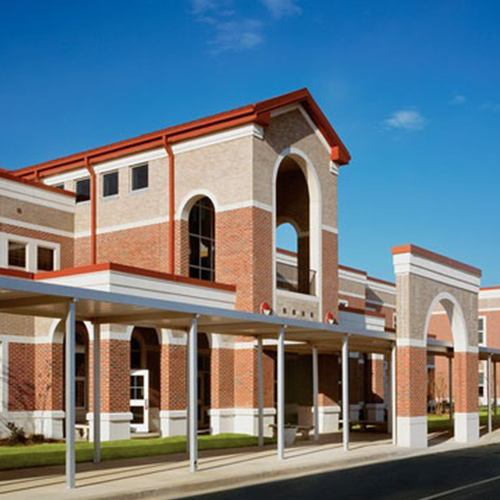

















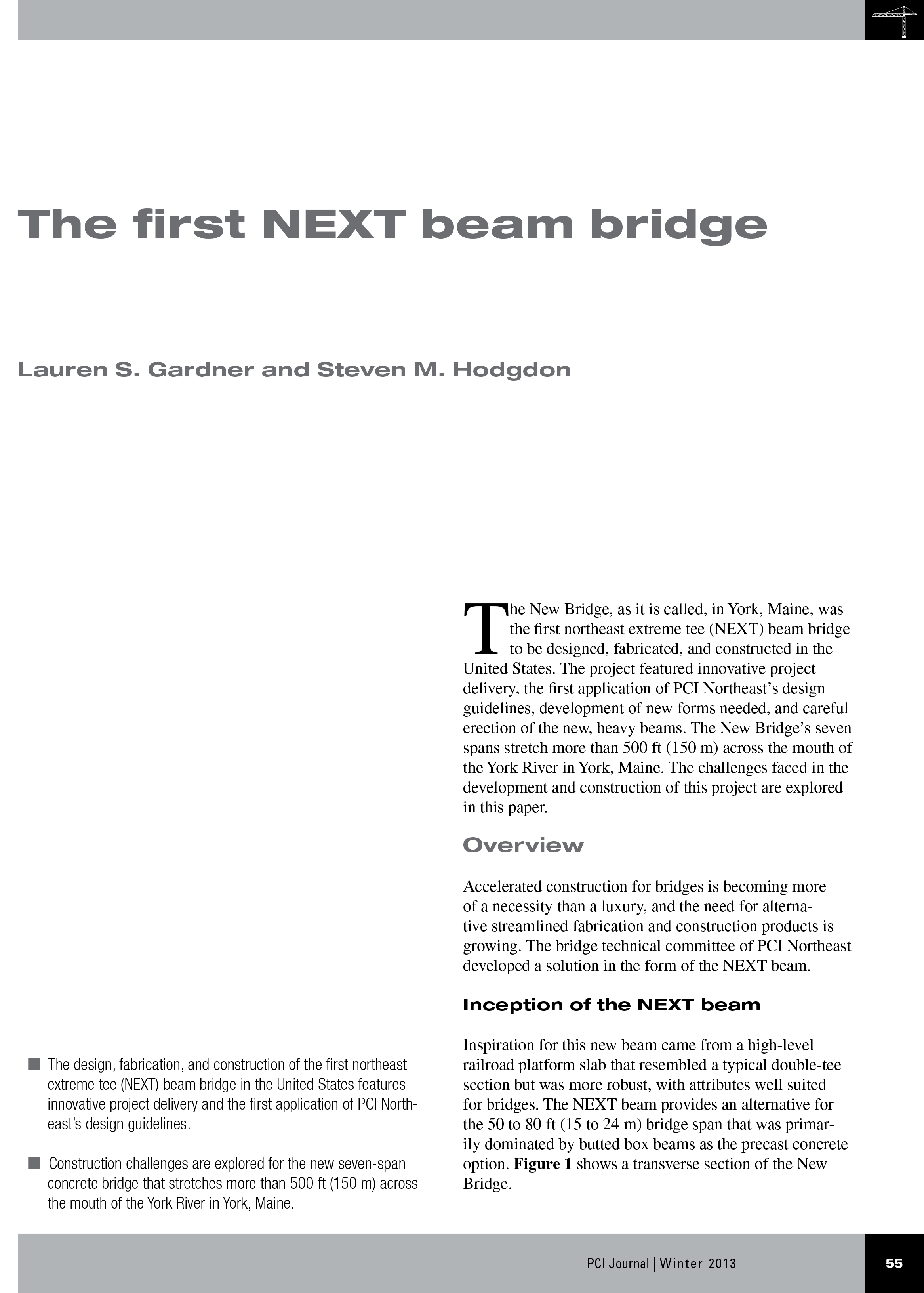






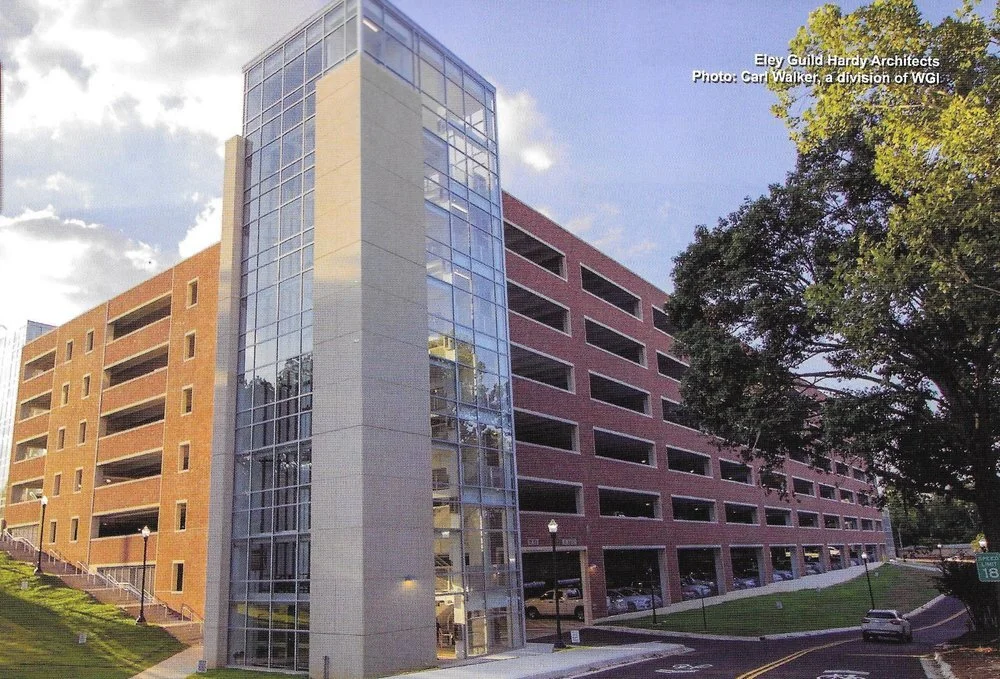
























![2012 GATE Logo #186[3449].jpg](https://images.squarespace-cdn.com/content/v1/5b70ddec55b02c6b27335114/1574440265229-XD9QRGROB5M7FMVSXQZY/2012+GATE+Logo+%23186%5B3449%5D.jpg)


































